

9 Killer Speech Openers to Start a Talk or Presentation.

Danny Riley 8 min read
What you’ll learn:
- The importance of a “killer” speech opening.
- 9 powerful speech openers and how to use them.
- Examples from great speakers you can learn from.

Great speech openers hook your audience.
“ Well begun is half done” – Mary Poppins.
A killer speech opener will make the difference between a presentation that makes you soar or your audience snore .
I’ve researched the whole web to find nine killer speech openers to make your audience lean in and listen rather than tune out and daydream.
You’ll see how masters of the craft have used them, and how you can too.
Number seven takes hutzpah to pull off. Ready for the whole list of killer speech openers?
The Shock Opener
One of the best ways to open your speech with a buzz is to startle or shock them.
You can shock an audience in many ways, but they all rest on the major senses of VAKS:
- Kinesthetic (touch)
We don’t want your audience tasting your talk, but it should leave a good taste in their mouths.
Changing Minds suggests asking if the audience is awake after appearing from a flashbang and a cloud of smoke, and this might work for you if you’re a magician or playing some kind of character for your speech like a genie.
Suppose you aren’t going for the magic angle.
In that case, you can shock them on a psychological level instead, as Conor Neill recommends, and tell your audience a surprising fact or statistic that makes them question their thinking or beliefs.
“Did you know that half the water on earth is older than the sun?”
Questions like these will shake an audience awake and turn on their critical thinking nervous-system.
Don’t take my word for it; you can see an incredible demonstration of the shock opener in Mohammed Qahtani’s speech, The Power of Words .
Qahtani opens by taking out a cigarette and placing it into his mouth before trying to light it. The audience is so shocked that they gasp and tell him to stop.
Remember, if your audience is shocked, they are listening.
Your audience doesn’t always have to be jolted to attention with a shock opener, though you can use a more subtle approach to grab their focus.

Discover Your Charisma Score!
The Charismatic Speaker Scorecard benchmarks your ability to speak in an engaging way, and identifies opportunities to improve based on three key areas:
- Confident Mindset
- Compelling Content
- Engaging Delivery
The Story Opener
You can set the tone of your speech instantly with a story .
In Hollywood, filmmakers and directors use an ‘establishing shot’ to set the tone and theme of the entire film.
When creating your speech, think of a short story that sums up your talk.
Maybe you tell half the story to begin with, and then the other half at the end.
The important thing is your tale must be relatable . If your audience can’t imagine themselves in the story, they won’t be engaged.
We all experience very similar things in life:
- We all went to school and had a teacher we loved
- We all have parents who loved us or made mistakes in our upbringing
- We all had a first crush.
We are all cut from the same cloth, so it’s good to be reminded that others are going through what we face or think as we do.
Bryan Stevenson does a stellar job of recounting his mischievous grandmother in his TED talk, We need to talk about an injustice .
The best thing is, you can combine a story-opener with any other speech opener in this list.
It’s truly versatile.
One of my favourite speech openers is next, though.
The Intrigue Opener
I love this speech opener.
What better way to hook your audience than to intrigue them with mystery or a juicy secret?
Take a look at Daniel Pink’s TED Talk The puzzle of motivation . After he begins, Pink, looking like a guilty man sent to the gallows tells his audience:
“I need to confess something, at the outset here. A little over 20 years ago, I did something I regret. Something I’m not particularly proud of”.
Wow. How intriguing, right?
You have to admit; you want to know what he’s about to confess.
Choose every sentence, every word, and every mark of punctuation to increase the tantalisation temperature.
Whether it’s a secret or confession, the Intrigue Opener piques just enough curiosity in your audience to keep them from checking Whatsapp.
As humans, we need closure.
We do not like open loops.
That’s why it is both enthralling and aggravating when someone plays on our need to be sure.
Just as we cannot stand an open loop, we are instantly engaged when someone gives us a puzzle to solve.
You’ll notice the best speeches, books, tv shows, and films do not spoon feed you all of the information.
I’ve always liked the way Malcolm Gladwell writes his non-fiction books because they contain puzzles that you solve as a reader.
This puzzle needs to be related to the speech or presentation you’re delivering, of course. It cannot be a random puzzle and will ideally be impossible or extremely difficult to solve at first.
After the speech begins and the puzzle is revealed, you should slowly drop hints on how to solve the mystery.
Up next, speech openers that use a physical object to create curiosity in the audience’s mind.
The Prop Opener
One of the most potent ways you will captivate your audience is to use a powerful prop in your opening address.
What better way to capture an audience’s imagination than to show them a mysterious or beautiful object?
If you’ve never seen the Prop Opener done well, then take a look at one of the greatest speeches of all time:
Dananjaya Hettiarachchi’s, See Something .
Danajaya enters with a simple rose in his breast pocket, takes it out, gazes at it nostalgically, smells it and then begins to speak.
This same prop appears again right at the end of his speech to end his talk with a flourish.
There are many different props you can use.
JJ Abrams used a Mystery Box to absorb the audience’s attention and used the box as a metaphor for his entire career.
If you think the prop opener is just for TED Talks and Toastmasters Final Speeches, remember that most company product launch centre around one or more props.
Steve Jobs revealed his new products in ever-innovative ways.
Still, while the last two speeches I’ve mentioned opened with physical items, most of Jobs’s presentations built intrigue through the sight of the product.
So remember, you can use an object, or tease your audience with the absence of a prop, but make that prop integral to your talk.
You don’t always have to use a prop, of course.
A more minimalist approach to opening your speech uses the best audience reaction a speaker can receive: laughter.
The Funny Opener
Using laughter to win over your audience is the golden ticket to immediate rapport with your audience.
Jack Schafer, PhD at Psychology Today, said that People Will Like You If You Make Them Laugh , which seems obvious, but at least you know we have scientists on the case.
He also mentions that constructing humour requires and projects a high level of intelligence .
Of course, laughter is subjective, but it is also infectious, and if you get enough members of your audience to titter, it will spread across the whole group.
If you want to see just how quickly you can win an audience over with humour, take a look at Ken Robinson’s subtle but delightful ability to raise a chuckle in his speech Do Schools Kill Creativity?
Ken’s ability to speak conversationally to an audience of thousands is genuinely remarkable.
If you break down his humour, it is easy to see how you could include similar content in your presentations.
Whether you can pull it off as well as Ken is another story.
Not everyone feels like they can be a comedian, though; I get that.
Well, that’s alright because there are other ways to open your talk that play on other strong emotions.
You can inspire your audience too.
The Inspirational Opener
One of my favourite ways to help beginner speakers to open their presentation is with a quote.
A quote acts like a story in that it sets the tone and theme of your speech, but it takes much less effort and even less skill.
An effective quote is usually only one line long and supported by the credibility of the original author who uttered those words.
Watch the way Clint Smith opens his TED Talk The Danger of Silence .
Using Martin Luther King’s voice to start his speech gives Clint what psychologists call the transference effect .
Just by citing someone else, especially someone admired and famous, you redirect the emotions an audience have towards that person onto yourself.
One caveat to using quotes, though:
Fact check them . I cringe whenever I see someone incorrectly quoting someone.
Have you ever heard the quote by Albert Einstein:
“Insanity is doing the same thing over and over, and expecting different results”?
A great quote, isn’t it?
But Albert Einstein never said those words .
A quick check on Reuters will help you add more credibility to your inspirational opener.
Finally, try to use a quote few people have ever heard. Inspiring words have been filling the archives of history for millennia, so seek out something that has been left dusty on the shelf rather than the same recycled iterations.
Next, let’s look at a type of bold speech opener that take real hutzpah to land well.
The Perspective Shift Opener
A powerful speech opener that will take confidence is the perspective shift opener.
This opener will lead the audience in one direction before changing direction and setting a new pace for the speech.
Cameron Russel does a fantastic job of controlling the frame in her TED Talk Looks aren’t everything. Believe me; I’m a model.
Russel takes to the stage dressed in a skimpy dress and begins to tell the audience about her career, but then does a rapid wardrobe change on stage in front of the entire audience.
This change of dress sets a new tone, feel, and direction for the speech.
If you can change the audience’s perspective or frame of reality, you are in the driving seat.
One of the best things you can hope for as a speaker is moving hearts and changing minds.
If you aren’t a confident speaker, start small.
Vanessa Van Edwards suggests never mentioning how nervous you are.
It’s distracting and makes the audience pick up on all the subtle nervous energy and cues you give off. Control the frame instead and act cool and confident: they will buy into it.
Another great way to hold frame control over an audience is by using the power of silence .
The Silence Opener
Silence is a valuable commodity in today’s noisy and distracting digital world.
Creating silence at the beginning of your talk can profoundly affect your audience and their focus.
Did you ever have a teacher at school who used silence effectively?
When my English classmates were noisy, our teacher Mr Rylance would hold up his hand in silence.
Slowly we would settle down and focus on his raised hand.
A few would giggle, but that would peter out until we all wrapt in a hypnotic stillness.
If you want to see an example of how to use silence, then look at Neal Glitterman’s speech The Power of Silence .
You can see how much gravity silence can have , especially as a speech opener.
The final killer opener I want to introduce you to is the big promise opener.
The Big Promise Opener
I believe that all speeches and presentations should contain a big promise as it tells your audience why they should keep on listening.
Ideally, your big promise will be your speech title or phrase that pays which is a recurring foundational phrase you will use throughout your presentation.
A big promise is your way of making a deal with the audience : you listen to me, and you’ll get something in return.
Creating a big promise at the beginning of your speech is like adding a teaser trailer to the beginning of a TV show. It suggests a reason you should stick around.
When Arthur Benjamin introduces his talk Faster than a calculator by announcing:
“I am a human calculator!”
You know that proof is on the way.
Remember the essential rule of the Big Promise Opener: make it big and keep your promise.
WOW your audience with these killer speech openers.
I hope you feel that I kept my promise of sharing nine killer speech openers to start a presentation.
Did you notice any other speech openers at the beginning of this article?
Don’t forget; these openers can be mixed and matched.
You can include a number of these speech openers in the same presentation to create more impact.
Let me know which of these killer openers was your favourite, and let me know if you have any more you’d like to share.
– Danny Riley
Subscribe and get my FREE Masterclass on Speaking with Charisma . 👇
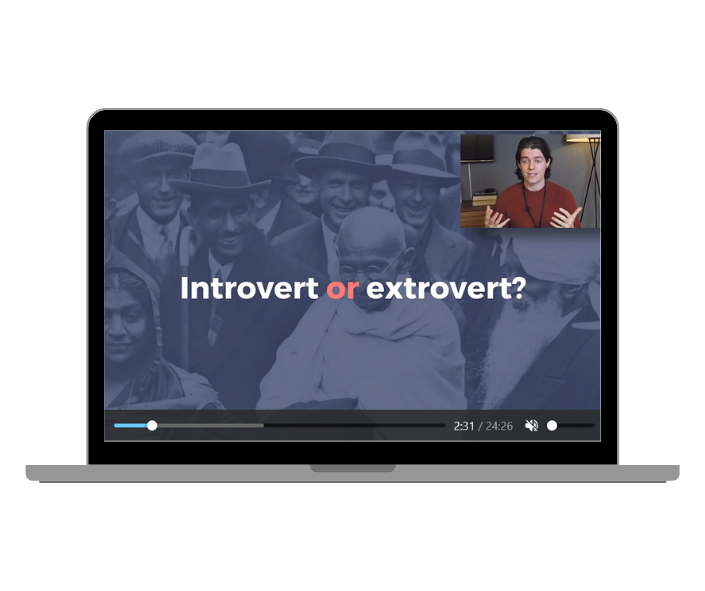
Navigation:
Home About Success Stories Contact Privacy Policy
Work with Ed:
1-to-1 Coaching 1-Day Masterclass Team Training
Follow/Connect:
Get started:, copyright © 2023 project charisma ltd. all rights reserved..
404 Not found
- Personal Development
- Sales Training
- Business Training
- Time Management
- Leadership Training
- Book Writing
- Public Speaking
- Live Speaker Training With Brian
- See Brian Speak
- Coaching Programs
- Become a Coach
- Personal Success
- Sales Success
- Business Success
- Leadership Success
15 Ways to Start a Speech + Bonus Tips
You have heard the saying “First impressions are lasting; you never get a second chance to create a good first impression.”
The same is true when talking about how to start a speech…
The truth is, when you start your speech, you must focus everything on making a positive first impression on your audience members (especially if you are doing the presentation virtually ). The introduction is basically the formal greetings for speeches, so let’s be sure to get this right to really hook the audience.
Here are 15 different ways to start a speech as well as 2 extra BONUS tips at the end.
1) Thank the Organizers and Audience
You can start by thanking the audience for coming and thanking the organization for inviting you to speak.
Refer to the person who introduced you or to one or more of the senior people in the organization in the audience.
This compliments them, makes them feel proud and happy about your presence, and connects you to the audience like an electrical plug in a socket.
2) Start With a Positive Statement
A presentation tip at the start is to tell the audience members how much they will like and enjoy what you have to say.
For example, you might say:
“You’re really going to enjoy the time we spend together this evening. I’m going to share with you some of the most important ideas that have ever been discovered in this area.”
Remember that speaking is an art, so be an artist and take complete control of your performance,
3) Compliment the Audience
You can begin by complimenting the audience members sincerely and with great respect.
Smile as if you are really glad to see them as if they are all old friends of yours that you have not seen for quite a while.
You can tell them that it is a great honor for you to be here, that they are some of the most important people in this business or industry, and that you are looking forward to sharing some key ideas with them.
You could say something like:
“It is an honor to be here with you today. You are the elite, the top 10 percent of people in this industry. Only the very best people in any field will take the time and make the sacrifice to come so far for a conference like this.”
4) Start Your Speech By Referring to Current Events
Use a current event front-page news story to transition into your subject and to illustrate or prove your point. You can bring a copy of the newspaper and hold it up as you refer to it in your introduction.
This visual image of you holding the paper and reciting or reading a key point rivets the audience’s attention and causes people to lean forward to hear what you have to say.
5) Refer to a Historical Event
For many years, I studied military history…
Especially the lives and campaigns of the great generals and the decisive battles they won. One of my favorites was Alexander the Great.
One day, I was asked to give a talk on leadership principles to a roomful of managers for a Fortune 500 company.
I decided that the campaign of Alexander the Great against Darius of Persia would make an excellent story that would illustrate the leadership qualities of one of the great commanders in history.
I opened my talk with these words:
“Once upon a time there was a young man named Alex who grew up in a poor country. But Alex was a little bit ambitious. From an early age, he decided that he wanted to conquer the entire known world. But there was a small problem. Most of the known world was under the control of a huge multinational called the Persian Empire, headed by King Darius II. To fulfill his ambition, Alex was going to have to take the market share away from the market leader, who was very determined to hold on to it.
This is the same situation that exists between you and your major competitors in the market today. You are going to have to use all your leadership skills to win the great marketing battles of the future.”
6) Refer to a Well Known Person
You can start by quoting a well-known person or publication that recently made an important statement.
One of the subjects I touch upon regularly is the importance of continual personal development.
I will say something like:
“In the twenty-first century, knowledge and know-how are the keys to success. As basketball coach Pat Riley said, ‘If you are not getting better, you are getting worse.’”
7) Refer to a Recent Conversation
Start by telling a story about a recent conversation with someone in attendance.
For instance, I might say:
“A few minutes ago, I was talking with Tom Robinson in the lobby. He told me that this is one of the very best times to be working in this industry, and I agree.”
8) Make a Shocking Statement
You can start your talk by making a shocking statement of some kind.
For example, you might say something like:
“According to a recent study, there will be more change, more competition, and more opportunities in this industry in the next year than ever before. And 72 percent of the people in this room will be doing something different within two years if they do not rapidly adapt top these changes.”
Click here If you want to learn more techniques to wow your audience.
9) Quote From Recent Research
You can start by quoting a recent research report.
One example is:
“According to a story in a recent issue of Businessweek, there were almost 11 million millionaires in America in 2018, most of them self-made.”
10) Start Your Speech By Giving Them Hope
The French philosopher Gustav Le Bon once wrote, “The only religion of mankind is, and always has been hope.”
When you speak effectively, you give people hope of some kind.
Remember, the ultimate purpose of speaking is to inspire people to do things that they would not have done in the absence of your comments.
Everything you say should relate to the actions you want people to take and the reasons that they should take those actions.
11) Be Entertaining
Bill Gove used to walk onto the stage after his introduction if he had just finished talking to someone on the side and was breaking off to give his talk to the group.
The audience got the feeling that his entire talk was one continuous conversation, devoid of meaningless filler words .
Bill would often go to the edge of the stage and then drop his voice in a conspiratorial way, open his arms, and beckon the audience members to come a little closer.
He would say, “Come here, let me tell you something,” and then he would wave them forward as though he was about to tell a secret to the entire room.
The amazing thing was that everyone in the room would lean forward to hear this “secret” that he was about to share. People would all suddenly realize what they were doing and break out in laughter. It was a wonderful device to get the audience into the palm of his hands.
12) Ask a Question
You can open by making a positive statement and then ask a question requiring a show of hands.
Try something like this:
“This is a great time to be alive and in business in America. By the way how many people here are self-employed?”
Raise your hand to indicate what you want people to do. I have used this line, and after a number of hands go up, I then say to someone who raised their hand in the front, “How many people here are really self-employed?”
Invariably, someone will say, “We all are!”
I then compliment and affirm the answer: “You’re right! We are all self-employed, from the time we take our first jobs to the day that we retire; we all work for ourselves, no matter who signs our paychecks.”
13) Open With a Problem
You can start with a problem that must be solved. If it is a problem that almost everyone has in common, you will immediately have the audience’s complete and undivided attention.
For example, you could say:
“Fully 63 percent of baby boomers are moving toward retirement without enough money put aside to provide for themselves for as long as they are going to live. We must address this problem and take action immediately to ensure that each person who retires will be able to live comfortably for the rest of his or her natural life.”
14) Make a Strong Statement, Then Ask a Question
You can start by making a strong statement and then ask a question. You then follow with an answer and ask another question. This gets people immediately involved and listening to your every word.
Here’s an example:
“Twenty percent of the people in our society make 80 percent of the money. Are you a member of the top 20 percent? If not, would you like to join the top 20 percent or even the top 10 percent? Well, in the next few minutes, I am going to give you some ideas to help you become some of the highest-paid people in our society. Would that be a good goal for our time together today?”
15) Tell a Story
You can start your talk with a story. Some of the most powerful words grab the complete attention of the audience are, “Once upon a time…”
From infancy and early childhood, people love stories of any kind. When you start off with the words, “Once upon a time…” you tell the audience that a story is coming. People immediately settle down, become quiet, and lean forward like kids around a campfire.
When I conduct full-day seminars and I want to bring people back to their seats after a break, I will say loudly, “Once upon a time there was a man, right here in this city…”
As soon as I say these words, people hurry back to their seats and begin to listen attentively to the rest of the story.
The story technique is very effective.
In fact, its probably one of the best public speaking tips I’ve learned to this day.
Bonus Tip: Tell Them About Yourself
Very often, I will start a speech to a business, sales, or entrepreneurial group by saying:
“I started off without graduating from high school. My family had no money. Everything I accomplished in life I had to do on my own with very little help from anyone else.”
It is amazing how many people come up to me after a talk that began with those words and tells me that was their experience as well.
They tell me that they could immediately identify with me because they too had started with poor grades and limited funds, as most people do. As a result, they were open to the rest of my talk, even a full-day seminar, and felt that everything I said was more valid and authentic than if I had been a person who started off with a successful background.
Building a bridge like this is very helpful in bringing the audience onto your side.
Bonus Tip: Get Them Talking to One Another
You can ask people to turn to the person next to them to discuss a particular point.
For instance, you could say:
“Tell the person next to you what you would like to learn from this seminar.”
Whatever you ask your audience members to do, within reason, they will do it for you. Your commands and your thought leadership will easily influence them, as long as you ask them with confidence.
By following any one of these tips for starting your speech, you are sure to grab your audience’s attention every time. How do you start a speech? Let me know in the comments.
« Previous Post 9 Tips to End a Speech With a Bang Next Post » 15 Ways to Overcome Your Fears of Writing a Book
About Brian Tracy — Brian is recognized as the top sales training and personal success authority in the world today. He has authored more than 60 books and has produced more than 500 audio and video learning programs on sales, management, business success and personal development, including worldwide bestseller The Psychology of Achievement. Brian's goal is to help you achieve your personal and business goals faster and easier than you ever imagined. You can follow him on Twitter , Facebook , Pinterest , Linkedin and Youtube .
- Most Recent
- How to Write an Author Bio (Examples Included)
- Personal Development Plan Templates for Success
- How to Sell and Become a Master Salesperson
- Navigating Life with a Professional Life Coach & How to Become One
- 165 Inspirational Quotes To Keep You Motivated In Life
- Free Webinar: How To Write a Book and Become a Published Author
- Free Video Series: 3-Part Sales Mastery Training Series
- Free Assessment: The Confidence Factor
- Free Assessment: Discovering Your Talents
Browse Categories
- Financial Success
Follow Brian & Join the Discussion
- Free Resources
- Best Sellers
- Knowledge Base
- Shipping & Returns
- Privacy Policy
- About Brian
- Brian Recommends
Your Privacy is Guaranteed. We will never give, lease or sell your personal information. Period!
© Copyright 2001-2024 Brian Tracy International. All Rights Reserved.
The Throughline Blog
Practical Media Training and Public Speaking Tips
How to Open a Speech – 25 Ways & Ideas
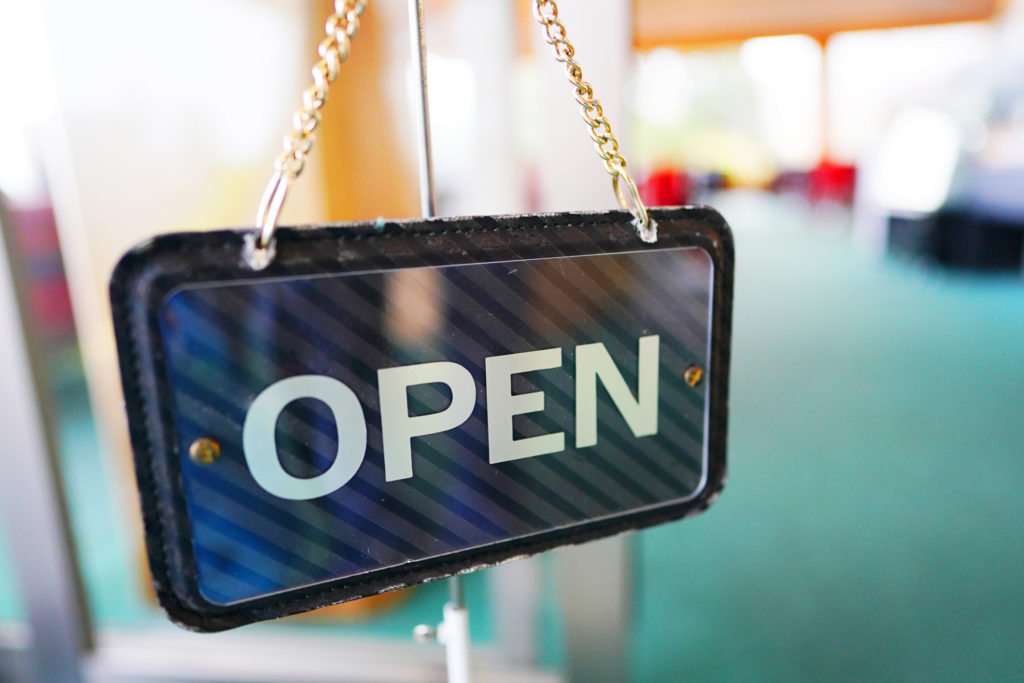
We don’t want to break it to you, but you don’t really have all that much time. As a public speaker or presenter, you have but a scant few moments to open a speech or presentation with a powerful hook. Here, we offer 25 great ways on how to open a speech.
But first, a quick note about the two elements any speech opening should possess: it must be engaging and on message . The way you open a speech gets them in the door and your main point, or message, keeps them in their seats.
Notice that we said engaging and on message. A funny opening joke may engage the audience, but if it’s not directly related to your presentation’s main message , your audience may only remember the joke. There’s nothing funny about that.
What does it mean to be on message? First, you need one. As part of our public speaking workshops , we encourage our clients to themselves a simple question: What is the one thing, more than anything else, I want this audience to remember from my presentation six months from now? That one thing typically is your overarching message .
Some examples:
“Our nonprofit organization’s donations are surging and have more than made up for the dip in last year’s contributions.” “This program for at-risk youth is as beneficial for the overall community as it is for the actual participants. “ “My new product may look like many others, but what it delivers is unlike anything else on the shelf.”
Your messages are meaningful, but they become memorable when you frame them within the context of your open.
Understanding the Importance of the Speech Greeting and Opener
Just as a storefront business owner draws customers with their window display, or a publisher gets a sale because of an eye-catching book cover, your speech opening hooks your audience and keeps them in their seats.
The first few moments of your presentation are vital for its success.
For that reason, your presentation opening speech needs to be as engaging as possible. Niceties, such as introductions or thank-yous, or relevant (but uninteresting) logistical information are impediments to getting your audience immediately invested in your topic. We show you all about the three parts you should have in your presentation open here .
The opens that follow allow you to leap directly into the heart of your message and convey your main takeaway points quickly, creatively, and effectively. Your audience’s attention is precious. Give them an open that convinces them their investment of time will be worth it.
25 Ways to Open a Speech
These opens, from our book 101 Ways to Open a Speech , represent a mix of styles and methods. You can open your presentation speech with a third-person anecdote or share your own story. You can be persuasive or utilize the element of surprise. Some speech openers tell a story, others frame a topic, and a couple rely on modern technology. There’s a way to open a speech that is right for you, that reflects your personality, and that serves your specific goals and topics.
1. The Common Ground Open – Is there a gap between you and the audience? Perhaps you’re a 70-something speaking to some high school students, or a conservative Republican addressing a group of left-leaning advocates. If you have any chance of succeeding in sharing your message, you’ll need to close the gap quickly. Opening with a shared story, statistic, goal, or interest, and doing so with humility and grace, is an excellent way to bring the audience closer to you and to show them they have something to gain by listening to you. Imagine that a CEO of a large investment company is about to talk finances to a group of entry-level employees at one of your many locations. Here’s how she could start:
“You may not think I know what it is like to struggle, but at your age I was scraping for pennies, working two jobs, and still barely managing to pay my rent. It got easier when I learned to make my money work as hard as I was. It’s a lesson I plan to share with you today .”
2. Descriptive Open – A school administrator is talking to teachers about a new approach to student test prep. He could say:
“With your help, we are going to implement new lessons that reduce the rate of failure by increasing students’ opportunities to experience success.”
Are you still awake? Abstract concepts like “rate of failure,” “opportunities,” and “success” don’t exactly rouse an audience. When words are vivid, messages gain power and pop. Concrete and descriptive words, as opposed to abstract concepts, put the audience in the middle of the action. This version would be better:
“No one wants to see that big red ‘F’ on a test – not a student, not a teacher, and not a parent. With our new approach, and your help, we’ll be able to hand out a lot more ‘A’s’ and ‘B’s’—and the students would have worked hard to earn them.”

4. The Third-Person Anecdote Open – Stories are great ways to communicate the human condition. Therefore, choose a story or anecdote you’ve heard along the way – or pick one out of the local newspaper or online news story – and use it to reinforce your presentation’s main message. However, don’t start by saying, “I’d like to begin with a story.” Just start with the action:
“Three years ago, Walt Harris had his dream job, dream spouse, and dream home. He worked out five days a week, ate well, and mediated on weekends. Then he received a diagnosis from his doctor that changed his life. In the past three years, Walt lost his job, lost his home, and is close to facing divorce. Unfortunately, almost all of this was preventable.”
5. The Show of Hands Open – How many of you think this way to open a speech is overdone? How many of you think it could be done better? The question you pose should challenge conventional thinking, lead to a counterintuitive conclusion, or add a dose of unexpected humor. Likewise, this strategy works well if you are trying to sway the audience to reconsider previously held positions or beliefs. You must be quick on your feet to transition from the audience’s answers to the point you are trying to make:
“So, you think the sky is blue? Well, I’m going to tell you what happens on those days when it appears to be green.”
6. The Fable Open – Do you have something to preach but don’t want to sound preachy? If you lead off with a fable, or one of its literary cousins (allegories and parables), you can delve into moral lessons and insights about human behavior, all without sounding too heavy. In her book, “The Story Factor,” Annette Simmons writes that stories provide a more accessible route. A story, she says, is a “more dynamic tool of influence. Story gives people enough space to think for themselves.”
7. The Contrast Open – If speeches were boxing matches, you’d use the contrast open every time. This technique showcases the difference between diametrically opposed concepts, positions, ideas, or words. As a result, this approach is useful if you want to persuade others to change their perspective or embrace something new. Here are some of the themes that work well:
- Needs vs. Wants
- Obstacles vs. Opportunity
- Problem vs. Solution
- Possible vs. Impossible
8. The Information Gap – You know you will be facing a crowd of people who are quite knowledgeable about your subject. That’s OK. As it turns out, people who know a lot about a topic are still just as interested in learning about the parts of the topic they don’t know, according to American educator and economist George Loewenstein . If you can find a kernel of knowledge that exposes the gap or looks at the topic in a different way, you’ve given your audience ample reason to stick around to the end.
9. The Unexpected Definition Open – Dictionaries obviously do their jobs and do them well. However, there are times when a word gains more power when it is redefined. Say you are a valedictorian and you want to share how much your fellow students mean to you. Here’s a start:
“The dictionary defines classmate as a member of your class, but I define you all as so much more than that. We were each other’s friends, confidants, mentors, and guides. As worthy opponents, we challenged one other on the field and in the classroom. We were each other’s keepers and cheerleaders. And, we now can define ourselves as fellow graduates.”
10. “This Day in History” Open – This day in history you learned there were 25 ways to open a speech. That is a historical fact, but not a great citation. Fortunately, there are plenty of worthy, significant, thought-provoking, and interesting events you can find – a simple online search yields thousands – to illustrate your main point.
11. The Incorrect (or Ironic) Quote – Back in 2004, Microsoft’s Bill Gates told the world, “Two years from now, spam will be solved.” Oh yeah? Hindsight is 20/20, but that doesn’t mean you can’t benefit from the trove of ill-considered observations and incorrect assumptions about the future. Leading a presentation with an incorrect quote can help you transition to many powerful points, including the risks of false assumptions, the dangers of being slow to change, and the speed of evolution.
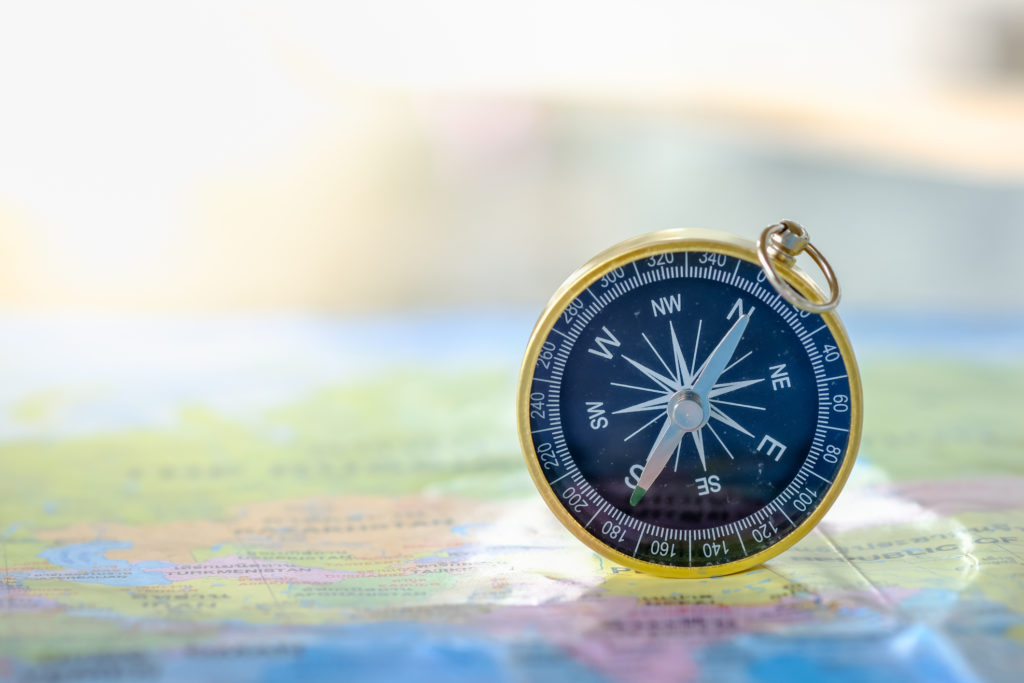
“We’re going to go on a dive to the deep sea. Anyone that’s had that lovely opportunity knows that for about two-and-a-half hours on the way down, it’s a perfectly, positively pitch-black world.”
When combined with a series of video images featuring bioluminescent sea creatures, the open transported the audience deep into the world of ocean exploration all from the comfort of their hotel meeting room.
13. The Bookend Open – Like the inseparable friends that they are, the Bookend Open must go with the Bookend Close, no ifs, ands or buts about it. Consequently, the theme, story, example, joke, theme, or fact that you offer in the open must return – in some fashion – for a visit in the end.
14. Rapid-Fire Statistics Open – A dietician wants to warn her audience about the dangers of gaining weight on a diet rich in fast food meals. She could start like this:
“Between 2013 and 2016, more than 1 in 3 American adults took a turn through the drive-thru or approached the counter to grab a fast food meal on any given day. For children and teens, a fast food diet has been associated with higher caloric intake and poor diet quality. That double whammy is a reality that more young people face, as studies have found caloric intake from fast food on the rise for children aged 2 to 18. The industry itself shows no signs of slowing. The fast food industry is a $198.9 billion business in the United States. It’s expected to grow by more than $20 billion by 2020.”
This data stacking is less about individual numbers and more about the broader point she is trying to convey. The main takeaway is this: Society’s propensity for fast food is growing and affecting the health of children and teens.
15. The Mystery Open – They fill bookshelves and dominate television listings. What are they? Those mysteries, psychological thrillers, and police procedurals readers and viewers can’t seem to get enough of. A mystery works fine for an open, too. Here’s one way to do it: Pose a single question at the start of your talk and then answer it piece by piece during your presentation – leaving the big reveal for the close.
16. The Multiple Choice – It’s better than the tests you remembered as a student or the online surveys you are asked to take. That’s because it’s your multiple-choice test and it’s the way you can draw your audience to your topic. This open is tailor-made for a talk with multiple perspectives about an issue or different solutions for the same problem. Here’s an example:
“As a company, we have several directions we can take in terms of growth and increased sales. We could a.) buy up smaller companies to diversify our portfolio of services, b.) cull some of our services and move resources to focus on only a few or, c.) we could opt to franchise. I’m going to spend some time on each and then offer the option that I think is the way for us to go.”
17. The Challenge Open – Challenges spur audiences to act or deliver on a goal. You could open a speech with a challenge if you are seeking legislative change, raising money for a project, looking to increase sales, or asking for volunteers. The main objective is motivation. The audience not only needs to buy-in to your message but take the actions to manifest it. Here’s one way to do that:
“Dreamers see possibilities where others see obstacles. I am here today to call upon my fellow dreamers to encourage those who are hesitant about the project to look past the stumbling blocks we face in the construction of this community playground and consider giving kids a chance to play.”
18. The Skeptical Audience Open – A doubting audience is a difficult audience – there is no getting around it. They may be untrusting of your ideas or against what you are proposing. Perhaps they have been disappointed in the past or are simply stuck in their ways. The more “hostile” the crowd, the faster you need to address the gap. While every open needs to be a blend of your goals and audience needs, this one requires careful consideration. Here’s the formula:
- Anticipate the major objections.
- Have a sense of divided loyalties – the intractable, the undecided, and the supportive. Identify which of those most needs to hear your message and adjust accordingly.
- Frame the message around their concerns, not yours.
- Avoid defensiveness.
- Acknowledge obvious truths early.
19. The Rhetorical Question Open – Do you think opening with a question engages audience members? Yes, it does. This method engages the audience from the get-go. A CEO might pose this question:
“We offer great services. We have a loyal customer base. And, we make improvements every year. So, why are we not No. 1 in our market?”

- Ask a puzzling question you promise to reveal in the end.
- Propose a riddle.
- Suggest that the audience complete a mathematical equation and promise to give the answer context during the speech.
21. The Activity Open – Of all the 25 ways to open, this one triggers the most immediate engagement. Use it during training sessions and workshops when you are trying to teach a specific skill. When an audience engages in an activity right from the start, they recognize the benefits of listening to the rest of what you have to say. Make sure the activity is challenging, however. If they breeze through it, they’ll spend the rest of the workshop twiddling their thumbs.
22. The Self-Effacing Open – Remember the speaker who offered a joke, only to have that become his message? Well, in this way to open a speech, humor also must be deftly handled. Modesty and humility are the hallmarks of people who can laugh at themselves – which are both traits that can attract an audience. If you are planning to laugh at your own expense, just make sure it’s not at a cost. Stay away from jokes that question your credibility or diminish the topic of your speech. And make sure your self-deprecating humor doesn’t sound too self-pitying (“I hope, like my receding hairline, you won’t similarly retreat for the exit before I am done.”). You don’t want the audience thinking about your weaknesses or paying undue attention to them.

- An audio testimony
- A recording of a song
- An oral account
- A snippet of a speech
- Sounds of nature
24. The PowerPoint Open – Ahh, the PowerPoint presentation … when used correctly it is a highly effective tool for the audience. When used incorrectly, it induces a snoozefest. Overly literal slides typically fall flat, while conceptual (and eye-catching) images make your words even more memorable. If you plan on using technology front and center, you should pick an image that captivates and intrigues, and forms a segue into the opening you want to tell. For instance, you are presenting a talk on how to create a stunning painting. You could begin with a slide that shows a big, bold, and colorful painting. You say:
“This painting is the manifestation of dozens of choices and decisions the artist made along the way from concept to completion. We only see the final product, but the real art is the way it all comes together.”
As you proceed, you show slides in reverse, moving from final product to blank canvas. Along the way, you bring the viewer through each step.
25. The Study Hall Open – Some presenters are faced with the dilemma of sharing data-heavy charts and graphs. To rely solely on PowerPoint is potentially ineffective – just too much data at once. So, take your audience back to school and to all those handouts. Edward Tufte , an expert in data visualization and a professor emeritus at Yale University, suggests using the “study hall” method. At the beginning of the session, distribute the handouts and ask the audience to read them. Following their review, you are off to the races. Your task is not to repeat what they have read but offer context and meaning. “
What’s Your Opening?
Back in 1973, a horse named Secretariat ran the Kentucky Derby in 1 minute and 59 seconds – breaking the two-minute mark for the first time in the then 99-year history of the race. His record still stands.
It doesn’t take a lot of time to do something great. The way you open a speech may not break any records, but it can have a long-standing effect on your audience. From the very start, you have an opportunity to influence others, establish rapport, and exhibit creativity. When done well, such effort is rewarded. Your audience not only connects with you during your talk but also remembers what you said long after your speech is done.
- how to open a presentation
- how to open a speech
- presentation openers
- presentation opening
- public speaking
- public speaking tips
- speech openers
- speech opening
- ways to open a presentation
- ways to open a speech
Share this article
- Share on Facebook
- Share on Twitter
- Share on LinkedIn
- Share on Email
STAY UP TO DATE WITH THE THROUGHLINE NEWSLETTER
Join the thousands of professionals who receive our email newsletter. Improve your public speaking and media interviewing skills—and enhance your career— by signing up.
Public Speaking Skills Training
Since 2004, we have helped speakers prepare for the world’s biggest stages, including TED, the World Economic Forum, and a presidential announcement speech. We’re committed to your long-term growth, and we’ll be with you every step of the way.
More from the throughline blog

In Presentation Training How to Hide a Lavalier Mic Wire

In Presentation Training Are Your Stories Making You Appear Inauthentic?

In Presentation Training Why You Should Have Three Speech Opens
This website or its third party tools use cookies, which are necessary to its functioning and required to achieve the purposes illustrated in the privacy policy . If you want to know more or withdraw your consent to all or some of the cookies, please refer to the privacy policy. By closing this banner or continuing to browse otherwise, you agree to the use of cookies.
8 Presentation openers that grab your audience from the get-go
Andy Rodriguez Feb 1, 2022 1:57:11 PM
Your message is concrete. Your argument is watertight. But are you opening your presentation in the most engaging way? Here are 8 tried and tested techniques for opening your presentation with a bang.
1. Amplification technique
Take something minor and demonstrate it's a serious problem. Take something farfetched and make it seem real. Take something alien and make it close to home. The surprise factor will have them hanging on to your every word.
Good for: Grabbing your audience's attention, challenging expectations.
Example: It's widely accepted that girls tend to do better than boys in school. Philip Zimbardo begins his talk with a series of startling facts – 'Boys are 30% more likely than girls to drop out of school [...] Girls outperform boys now at every level, from elementary school to graduate school' – turning this idea into a nationwide issue.
The reverse of this is to take something seemingly scary or complicated and make it very simple.
We know that Malaria kills half a million people each year, and we've had a cure for it since the 1600s. Wait, what? Now speaker Sonia Shah has our full attention.
2. Sensory technique
Stimulate your audience's imagination by describing a scene in vivid detail, or ask them to remember a particular memory and recall what they saw, smelled, heard and felt. You could even make them aware of their physical surroundings in some way.
Tying what you're saying up with physical memories will help your audience retain information for longer.
Good for: Creating a lasting impression, making your ideas come alive.
Example: Amy Cuddy makes her audience 'do a little audit' of their bodies. She asks them 'how many of you are sort of making yourselves smaller? Maybe you're hunching, crossing your legs, maybe wrapping your ankles?' Activating the audience's sensory awareness (before revealing what those body habits mean) gives her talk greater resonance.
3. Personalization technique
Even well-meaning people sometimes won't act until an issue affects them personally. Make the problem relevant to your audience by showing that it's relevant to (or is caused by) them or their community.
An effective twist on this is revealing an unimagined connection between our current actions and things happening in the future or in far-flung places.
Good for: Making your audience care, making complex ideas simple.
Example: Emily Wapnick asks the audience 'Raise your hand if you've ever been asked the question "What do you want to be when you grow up?"', bringing cultural attitudes towards skills and work into the spotlight and revealing how it affects our perceptions of ourselves.
4. Puzzle technique
Opening with a puzzle piques your audience's curiosity from the get-go. It could be a problem, a riddle or the conundrum at the heart of your theory. It could be a real-world puzzle or a metaphor for the ideas in your talk.
Leave the puzzle open-ended but direct your audience to some place they can find the answer if you want them to continue engaging with your content after the talk. Or, promise to tell them the answer at the end so they listen throughout.
Good for: Waking up your audience's brains, inspiring curiosity.
Example: If someone gave you a candle, some thumbtacks and some matches, could you attach the candle to the wall so the wax doesn't drip onto the table? Dan Pink's candle puzzle challenges us and provides a springboard for discussion of what motivates us in the workplace.
5. Question technique
Your questions could probe the listener's personal memories, sense of identity, or general knowledge – whatever gets the cogs turning. Asking questions can be an effective way of prompting your audience to have an 'aha!' moment.
Opening questions are usually rhetorical as you're asking the listener to self-analyse, but you might like to direct them somewhere that they can share their ideas or experiences with you.
Good for: Helping the audience recognize a problem or come to some conclusion.
Example: Kelly McGonigal asks her audience to raise their hand if they've experienced different levels of stress over the past year. Almost the whole audience responds and demonstrates, very quickly and simply, how endemic a problem stress is.
6. Quotation technique
Quoting a famous person is an easy way to borrow a little of their power, especially if it's someone respected by your audience. If they're a more obscure choice, there's no harm in reminding your audience of that person's credentials.
Your audience may read personal things into your choice, so choose carefully. People are likely to have personal associations with famous quotes or speakers so be mindful of these too.
Good for: Giving your talk respectability, summing up an argument or an idea.
Example: Elizabeth Nyamayaro's chosen quote – 'As Africans, we must uplift all the people of Africa' – serves as the heart and soul of her entire presentation. It expresses the principles at the heart of her work, and tells her audience something of her as a person.
7. Story technique
Stories are perhaps the most effective tool for inspiring empathy and understanding in the listener. It's also a vastly underrated skill in the business world, even though it can engage your audience's mind in incredible ways .
Telling a personal story may make us feel vulnerable, but it's an opportunity to show confidence and character. Telling the story of someone you admire demonstrates your values. The story of a customer proves you listen and take pride in providing a good service.
Good for: Explaining ideas in an accessible way, synchronizing the audience's emotions with your own.
Example: Peter Attia begins his story 'I'll never forget that day back in the spring of 2006' – and now nor will we. His story is powerful not just because it's illustrative of the wider problem he's describing – but because he expresses genuine emotion as he tells it.
8. Humor technique
Making a joke makes your audience feel warmer towards you and more receptive to your ideas. The best presentation jokes involve self-deprecating humor, so being able to laugh at yourself is a must. You could also exaggerate a story for effect.
Your sense of humor tells your audience a lot about your values and can be a shortcut to building trust. It may also help them feel more comfortable about sharing their ideas and joining in if that's a part of your presentation.
Good for: Relaxing your audience, building rapport.
Example: Shawn Anchor's perfect comic timing makes this opening anecdote side-splittingly funny. The humor makes it easier for us to open up to what he's trying to say, making the serious message of his talk all the more impactful.
You can find more about these and other useful techniques at changingminds.org . Which is your favorite?
5 Ways to Craft Powerful (& Short) Speech Opening Lines
Hrideep barot.
- Presentation , Public Speaking , Speech Topics , Speech Writing

For most people, writing and delivering speeches is a daunting task. Thus capturing the audience’s attention by making a strong opening remark is key to a successful speech.
There’s no denying the importance of your conduct during the speech, and the audience can drift off at any time, but how you start your speech will ultimately determine what they expect from you.
There are numerous instructions on how to ensure that your speech starts out strongly. There is no one style that works for all speeches, even though they may each be useful in different ways. Writing and delivering speeches is a skill that is eminently functional and cannot be developed through some examples
Here, I’ll be discussing 5 elements that, if mastered, will enable you to write a fantastic speech introduction that is both captivating and compelling.
1) Study your spectators
Let’s begin by talking about the basics you need to get right. The first one is to understand the audience. If you crack a joke referring to Harry Styles to an audience full of senior corporate managers, you might not get the same response you would from a university student cohort.
It is highly important to study the audience you are going to be addressing. You need to know what they expect out of you, and what their opinions are going to be coming into the speech. You also need to judge the mood of the topic before beginning the speech. You cannot be going into a somber educational speech by talking about your childhood trauma, nor can you begin a speech directly through academic research citations.
For example, a joke about the current political scenario and how it would affect the corporate world will get you in with the employees of an MNC, and rhetoric on pop culture trends might work much better with an informal audience.
Once you have your research in place, you can begin looking at the kind of opening you want to utilize. Now there are a lot of options that you have here that can be used
There’s the ever-famous and highly utilized option of humor . Make your audience laugh and they will have your attention. But this is also quite commonly used. Another option under humor that you can use is self-deprecation. Making a joke about yourself makes it seem like the audience can relate to you and don’t need to put you on a pedestal. Humor is a wonderful add-on that you can be using throughout the speech. This article on Humorous Speech Topic Ideas will help you make your speech more engaging.
For example, Vanessa Van Edwards ticked all of the boxes above with her opening saying – Hello I am Vanessa, and I am a recovering awkward person. Check out her speech here –
2. Questioning
Next comes questioning . There are a couple of different ways you can question the audience to capture their attention. It can be something as simple as “How many of you have….?” or “Are you guys…?”. But it can be a rhetorical question as well such as “do you think apples are red or we’re all living a lie?” When the audience needs to answer something, you automatically have their attention.
Imagery is also a highly receptive tool. Imagery can be getting a prop that is relational to your speech and can be something as simple as your phone, it can be in terms of a presentation you show to the audience, or it can also be a performance you put up – such as singing and dancing. When you hold something or demand the audience to look at something, it becomes attention-grabbing and they start listening to everything you have to say. Here’s a guide on How to create Imagery when you Speak .
4. Provocation

Another quite famous prompt used is a provocation . Also sometimes used via unpopular opinions, which will perhaps go against the majority group’s opinion. If you provoke the audience, they have no option but to pay attention to what you have to say. If you start by saying pineapple on pizza is better, you better believe you’ll have the crowd’s attention.
5. Storytelling
Finally, another common prompt is storytelling . A personal anecdote goes a long way in building rapport. Especially a story that is personal and would resonate with the public. A very good example of this is Chimamanda Adichie’s speech on the dangers of a single story. She builds a connection and then follows through with her speech.
Very often it is noticed that while opening a speech, orators forget to time the delivery of their statement. If you just go and speak without the appropriate pauses it would come off as being nervous. The dialogue would also fail in such cases, especially if it is humor based. It is often recommended that you use short bouts of silence to build suspense as well. It cannot be too long, but just enough to capture attention as well. In fact, here’s an article on 13 Public Speaking Mistakes and How to Avoid Them
Speeches need to be of an appropriate length to get the best response from the audience. The audience will not be listening to a long speech without zoning out. Thus, your openings need to be short and appealing. Check out this article on How To NOT Start A Speech (And What You Can Do Instead) . You can’t go on and on about your opening statement without diving into the speech. Thus, the shorter the opener, even if it is a personal anecdote, the better the captivation.
5) Linguistics & Body Language

What happens a lot, is that orators try to use a lot of fancy languages right from the beginning of their speeches. If you start by using words the audience isn’t familiar with, it might seem like you’re being condescending. Thus, start with a language that you know is understandable to the audience and that will help you connect with them. Your research will also help you in how culture-specific you should be. Check out our youtube video on how to use body language to engage your listeners to understand this nuance better.
Writing opening statements is really not as daunting as you feel it would be. You need to understand the nuances that come with it and understand what exactly it is that you are trying to deliver.
It’s highly crucial to nail the subtleties of a strong introduction. If mastered, the process of giving speeches doesn’t seem all that scary anymore. Also now that you’re on your path to mastering how to open your speeches, here is an article to help you with 15 Powerful Speech Ending Lines (And Tips To Create Your Own)
Level up your public speaking in 15 minutes!
Get the exclusive Masterclass video delivered to your inbox to see immediate speaking results.
You have successfully joined our subscriber list.
Enroll in our transformative 1:1 Coaching Program
Schedule a call with our expert communication coach to know if this program would be the right fit for you

Feeling Loss of Words Can Cost You Opportunities: 10 Tips and Tricks

My Mind Goes Blank Mid Conversation: Why, What, and How?

20 Super Easy Conversation Starters for Social Anxiety

- [email protected]
- +91 98203 57888
Get our latest tips and tricks in your inbox always
Copyright © 2023 Frantically Speaking All rights reserved
Kindly drop your contact details so that we can arrange call back
Select Country Afghanistan Albania Algeria AmericanSamoa Andorra Angola Anguilla Antigua and Barbuda Argentina Armenia Aruba Australia Austria Azerbaijan Bahamas Bahrain Bangladesh Barbados Belarus Belgium Belize Benin Bermuda Bhutan Bosnia and Herzegovina Botswana Brazil British Indian Ocean Territory Bulgaria Burkina Faso Burundi Cambodia Cameroon Canada Cape Verde Cayman Islands Central African Republic Chad Chile China Christmas Island Colombia Comoros Congo Cook Islands Costa Rica Croatia Cuba Cyprus Czech Republic Denmark Djibouti Dominica Dominican Republic Ecuador Egypt El Salvador Equatorial Guinea Eritrea Estonia Ethiopia Faroe Islands Fiji Finland France French Guiana French Polynesia Gabon Gambia Georgia Germany Ghana Gibraltar Greece Greenland Grenada Guadeloupe Guam Guatemala Guinea Guinea-Bissau Guyana Haiti Honduras Hungary Iceland India Indonesia Iraq Ireland Israel Italy Jamaica Japan Jordan Kazakhstan Kenya Kiribati Kuwait Kyrgyzstan Latvia Lebanon Lesotho Liberia Liechtenstein Lithuania Luxembourg Madagascar Malawi Malaysia Maldives Mali Malta Marshall Islands Martinique Mauritania Mauritius Mayotte Mexico Monaco Mongolia Montenegro Montserrat Morocco Myanmar Namibia Nauru Nepal Netherlands Netherlands Antilles New Caledonia New Zealand Nicaragua Niger Nigeria Niue Norfolk Island Northern Mariana Islands Norway Oman Pakistan Palau Panama Papua New Guinea Paraguay Peru Philippines Poland Portugal Puerto Rico Qatar Romania Rwanda Samoa San Marino Saudi Arabia Senegal Serbia Seychelles Sierra Leone Singapore Slovakia Slovenia Solomon Islands South Africa South Georgia and the South Sandwich Islands Spain Sri Lanka Sudan Suriname Swaziland Sweden Switzerland Tajikistan Thailand Togo Tokelau Tonga Trinidad and Tobago Tunisia Turkey Turkmenistan Turks and Caicos Islands Tuvalu Uganda Ukraine United Arab Emirates United Kingdom United States Uruguay Uzbekistan Vanuatu Wallis and Futuna Yemen Zambia Zimbabwe land Islands Antarctica Bolivia, Plurinational State of Brunei Darussalam Cocos (Keeling) Islands Congo, The Democratic Republic of the Cote d'Ivoire Falkland Islands (Malvinas) Guernsey Holy See (Vatican City State) Hong Kong Iran, Islamic Republic of Isle of Man Jersey Korea, Democratic People's Republic of Korea, Republic of Lao People's Democratic Republic Libyan Arab Jamahiriya Macao Macedonia, The Former Yugoslav Republic of Micronesia, Federated States of Moldova, Republic of Mozambique Palestinian Territory, Occupied Pitcairn Réunion Russia Saint Barthélemy Saint Helena, Ascension and Tristan Da Cunha Saint Kitts and Nevis Saint Lucia Saint Martin Saint Pierre and Miquelon Saint Vincent and the Grenadines Sao Tome and Principe Somalia Svalbard and Jan Mayen Syrian Arab Republic Taiwan, Province of China Tanzania, United Republic of Timor-Leste Venezuela, Bolivarian Republic of Viet Nam Virgin Islands, British Virgin Islands, U.S.
Public Speaking Secrets
The Best and Worst Speech Openers: How to Capture Your Audience’s Attention
Introduction
Giving a speech can be a nerve-wracking experience. The pressure of walking on stage and knowing what to say can be overwhelming. However, the way you open your speech can make a significant impact on your audience. In this article, we will explore the best and worst speech openers to help you captivate your listeners during your next presentation, pitch, speech, or toast.
The Worst Ways to Open a Speech
When it comes to opening a speech, there are a few cardinal sins that should be avoided. Let’s take a look at some of the worst ways to start:
1. **Technical Difficulties**: Never start your speech by drawing attention to technical issues such as microphone problems or bright lights. Doing so will only distract your audience from your message.
2. **Nervousness**: Avoid mentioning your nervousness or how uncomfortable you feel in front of the audience. Acknowledging your nervousness will make your audience more conscious of it and create an atmosphere of anxiety.
3. **Half-hearted Welcome**: A lackluster or insincere welcome can set a negative tone for your speech. Avoid generic niceties or compliments that you don’t genuinely mean. However, if you can turn it into a humorous moment, like the example of Ken Robinson, it can work effectively.
The Best Speech Openers
Now that we’ve covered what not to do, let’s explore the best ways to open a speech and captivate your audience:
1. **Use Stories**: One of the most powerful ways to start a presentation is by telling a compelling story. Stories have the ability to engage the audience’s imagination and capture their attention. By sharing a personal or relevant story, you can create an emotional connection and make your audience feel involved.
2. **Present Your Big Idea**: Start off your speech by presenting your big idea or main message. Don’t make your audience wait for it; instead, dive right in and capture their attention from the beginning. Frame your big idea in an interesting and thought-provoking way to pique their curiosity.
3. **Quirky One-liner**: Humor and curiosity can be excellent tools to open a speech on a high note. Dare to start with an intriguing statement, a funny one-liner, or a question that grabs your audience’s attention. This approach adds an element of surprise and makes your speech more memorable.
Examples and Fill-in-the-Blanks
To help you understand how to implement these speech openers, here are some examples and fill-in-the-blanks that you can use:
1. **Story Opener**: Once upon a time, share a relevant story. I’m here today to share this story with you because explain the significance.
2. **Big Idea Opener**: You’re here for a reason, and that reason is present your big idea. The single most important thing I want to share with you today is emphasize your main message.
3. **Quirky One-liner Opener**: Did you know share an interesting fact about yourself, the audience, or the topic? Add a related statement or question that leads into your content.
Opening a speech effectively is crucial to capturing your audience’s attention and setting the tone for the rest of your presentation. By avoiding the worst speech openers and utilizing the best strategies such as storytelling, presenting your big idea, or using a quirky one-liner, you can engage your audience from the start.
If you’re interested in further enhancing your presentation skills, consider joining our course, “Powerful Presentations,” where we provide a framework for sharing ideas confidently and authentically in any setting. From stage performances to online videos, we cover various aspects such as nonverbal communication, storytelling, and humor. Visit sciencepeople.com/presentations(sciencepeople.com/presentations) to learn more and unlock your full presentation potential.
Remember, your speech opener sets the stage for success, so make it count!
Related posts:
- How to Overcome Fear of Public Speaking: 3 Tips
- TED’s secret to great public speaking | Chris Anderson
- How To Become A Master In The Art of Public Speaking (Part 2 of 2) | Eric Edmeades
- Public Speaking: 12 Rules for The Perfect Speech
Leave a Comment Cancel reply
Save my name, email, and website in this browser for the next time I comment.
Privacy Overview
Get in touch with us – here
- About Ginger
- About Leadership
- All programmes and courses
- Purpose-Driven Leadership
- Storytelling Mastery
- 1-2-1 training/coaching
- Elevate your Influence
- Executive Presence
- Present with Influence
- Public Speaking Foundations
- Assertive Communications
- Boosting Visibility and Confidence
- Building Your Personal Brand
- Clear & Concise Communications
- Courageous Communications
- Fearless Feedback
- High-Impact Communications
- Messages that Stand Out From the Crowd
- The Essentials of Storytelling for Business
- Virtually Brilliant for Online Communicators
- hello@gingerleadershipcomms.com
- +44 (0) 207 3888 645

Five of the Best Speech Opening Lines

Great opening lines to a speech get us curious and can set the direction for a powerful talk. In those first few seconds you have the chance to gain your audience’s attention, earn their trust, and persuade them you are someone worth listening to. The best introductions to speeches are a mile away from the standard welcomes and thank yous that set the snoozometer to max. Get it right, and those initial words can captivate the crowd from the off, creating a connection with every individual in the room. But how do you go about opening your speech with something different and memorable? A great place to start is looking at examples of introductions to successful speeches to see what you can learn from them. To show you what we mean, we’ve picked some of our favourite opening lines from TED talks, home to some of the best conference speeches in the world. From funny stories to hard-hitting introductions, TED talks show the art of the possible when it comes to getting your speech off to a kick-ass start. Have a go at guessing the speaker, or the focus of the rest of their talk (hint…we give you the answers later on).
Do you want to improve your public speaking? Why not view our Public Speaking Courses !
Guess the Speech: Five of the best speech opening lines
Speech A: Good morning. How are you? It’s been great, hasn’t it? I’ve been blown away by the whole thing. In fact, I’m leaving.
Speech B: For a long time, there was me, and my body. Me was composed of stories, of cravings, of strivings, of desires of the future. Me was trying not to be an outcome of my violent past, but the separation that had already occurred between me and my body was a pretty significant outcome. Me was always trying to become something, somebody. Me only existed in the trying. My body was often in the way.
Speech C: Sadly, in the next 18 minutes when I do our chat, four Americans that are alive will be dead from the food that they eat.
Speech D: Okay, now I don’t want to alarm anybody in this room, but it’s just come to my attention that the person to your right is a liar. (Laughter) Also, the person to your left is a liar. Also the person sitting in your very seats is a liar. We’re all liars. What I’m going to do today is I’m going to show you what the research says about why we’re all liars, how you can become a liespotter and why you might want to go the extra mile and go from liespotting to truth seeking, and ultimately to trust building.
Speech E: Imagine a big explosion as you climb through 3,000 ft. Imagine a plane full of smoke. Imagine an engine going clack, clack, clack, clack, clack, clack, clack. It sounds scary. Well I had a unique seat that day. I was sitting in 1D.

Answers: Who delivered these great opening lines?
These examples pack a punch for very different reasons. There’s absolutely no chance of the audience zoning out when the speaker goes straight in with such a powerful start. So, who gave these speeches, and why are the introductions so good? Time for the big reveal….
A: Sir Ken Robinson says schools kill creativity
Deceptively simple, the opening lines for this speech set the tone for what has become the most viewed TED talk of all (currently nearly 57 million views). Far from being just ‘throat clearing’, Sir Ken’s funny introduction cleverly paves the way for a talk that will gently but profoundly show us a new way of looking at education. It’s as if we are at a dinner party, being hosted by Sir Ken – he makes us feel comfortable, interested and open all at once. We are not being lectured to (which is always a possibility when education is the subject matter of choice), we want to learn and hear more. Very skilful indeed.
Ginger tip: funny introductions
Using humour in your introduction can be a great way to get your speech off to a flying start – but only if you do it in a way that feels natural. This example shows how you can make people laugh without telling a joke. It’s about finding your own funny and feeling totally comfortable with what you’re saying. If it feels a bit forced to you, it definitely will to your audience. You don’t have to make people roll around on the floor laughing, but light-hearted and amusing anecdotes can add energy and engagement to your talk – which is especially needed if you’re in the dreaded after-lunch slot . Remember, when you open your speech with something funny, you are setting the tone for the rest of your talk – so you’ll need to pepper humour throughout.
Extra Ginger nuggets
How to write a funny speech Funny inspiring speakers talks
B: Eve Ensler: Suddenly, my body
As you’d expect from a the writer of the Vagina Monologues, the start of this speech opening was profound, stark in its honesty and inviting. We empathize and want to know more. Unfortunately this speech suffered from a common affliction that writers face; in getting focused on the precise words of the speech (in this instance, Eve Ensler read her speech), we can get disconnected from the full power of the material. Whilst the words were powerful, we would have enjoyed the rest of this speech more if Eve had given herself permission to find the right words in the moment, rather than needing to be perfectly scripted.
Ginger tip: going unscripted
You want it to be perfect. You’re worried about forgetting something vital. You’re scared of doing it wrong. These are common and perfectly understandable reasons why people opt to script their speech and read it word for word. But rather than delivering a foot-perfect performance, you’re more likely to lose the vital connection with the audience. Not to mention risking plunging yourself into the dreaded ‘I’m sorry I’ve lost my place’ scenario. More than anything, people want you to be human and to speak from the heart. It takes confidence to ditch your notes, but with some simple techniques, you can prepare and remember your speech in a way that allows you to deliver a clear, compelling and authentic talk.
How to start a speech with power and confidence How to remember a speech without notes
C: Jamie Oliver’s TED Wish: Teach every child about food
This is one of our favourite ever TED talks, and it doesn’t pull its punches from the very first line. Jamie Oliver manages to balance preparation (statistics, stories, well-developed ideas) with heart in his TED talk. This speech opening line both makes our jaws drop to the ground in shock at such a statistic and opens our hearts to the human side of the story. Powerful stuff.
Ginger tip: punchy facts
Opening your speech with a hard-hitting fact can quickly add credibility to your talk and demonstrate the scale of an issue. It’s best to keep statistics simple and make them as relevant to the audience as possible, so it feels memorable rather than dry. Resist the urge to stuff the rest of the speech with stats. Try to stick to a few powerful facts and bring them to life with real examples.
Extra Ginger nuggets:
The key to presenting data…is not to present data How to make a powerful point with your speech
D: Pamela Meyer: How to spot a liar
We love talks that balance humour and connect us to the subject matter in hand – and Pamela Meyer does this perfectly in her TED talk opening line. By bringing a challenge straight to us, in our very seats, Pamela engages us and makes sure the talk is about ‘me’ the audience member. We’re laughing and ready to listen. Great job.
Ginger tip: setting up a problem
Setting up a problem at the start of your speech immediately creates a reason for listening and a direction for your talk. And if you involve the audience in the problem, it’s even more powerful. It doesn’t have to be something completely new, in fact telling us what we already know and explaining why that’s a problem can be a really engaging way to start. Depending on the subject matter, you can frame the problem in different ways – from serious to humorous. And it gives a natural structure to the rest of your talk as you explore how to solve the issue.
The best way to engage your audience Five methods to master audience interaction
E: Ric Elias: 3 things I learned while my plane crashed
Wow, what an opening! Who wouldn’t want to know more? Ric Elias showed here how powerful it is to jump straight into a story, with no fussing around with thank yous and throat clearing. Unfortunately after the winning start, the rest of the talk lacked some of the gusto and drama of its opening lines. What can we learn from this? Start with power, but make sure you structure your talk to include a journey that will continue to keep us involved all the way through.
Ginger tip: start with a story
Stories are one of the most effective ways to inspire others. We’re hard wired to connect with stories and your experience of the world is one of the most valuable speaking tools that you possess. Telling a story is a popular way to open a speech because it can quickly build that all-important human connection with your audience. If you have a message that’s personal, or if you’re trying to influence your audience to make a change, a story is a great place to start.
Why is it so important to tell your story? 3 storytelling secrets for public speaking

Creating the best introduction for your speech
We hope these examples of great opening lines demonstrate that you don’t have to conform to the ‘safe’ introductions we’re all used to hearing at corporate conferences. In fact, at Ginger, we dare our speakers to rip up the ‘rulebook’, to be courageous, and to take a different approach to setting the scene. You can find even more tips in our free guide, The 10 best ways to start your talk . We’d love to hear your thoughts on these and other examples of great opening lines – so please share your ideas in the comments below.
Beyond introductions
Of course, it’s all very well creating a captivating introduction, but you don’t want the rest of your talk to fall off a cliff edge after you’ve built it up so spectacularly. Maintaining the audience’s attention for the rest of your speech is just as important. We’ve developed the TED-style Talk Guidebook to help you through the process of writing a brilliant speech. Whether you’re crafting a short talk or a keynote, it will help you create a speech that’s as good as a TED talk – so you can wow your audience from the first word to the final thank you. If you’d like to get hands-on support with becoming a better public speaker, then take a look at our training courses. There’s something for every level, from nervous beginners to becoming a leading speaker on the world stage. We’d love to welcome you along.
UK based? Here’s some courses that you might enjoy:
- Presentation Skills and Essentials
- Leadership and Communications
- TED Talk Presentations

Ginger Leadership Communications
This showcase of inspiring female speakers is part of Ginger’s work with game changing leaders.

- Scroll to top

The 10 best presentation openers.
First impressions count. Adopt these techniques to keep your audience rapt from the get-go. Here are the ten best presentation openers.
Some say it’s 15 seconds; others 30. A few generous souls will even allot up to 60 seconds. Whatever the case, this much is indisputable: you’ve got one minute max in which to capture your audience’s attention at the start of your presentation. After that, they’re gone.
Physically they’re still occupying the same space, give or take a fidget, but mentally they’re reliving last night’s Netflix marathon, or pondering whether centaurs really have two rib cages. Miss that window of opportunity – those precious seconds in which all eyes really are on you – and you’ve lost your audience.
The beginning of the story
Way before you fire up PowerPoint, you’re crafting your narrative and what better way to start than at the beginning? We like you, you’re smart.
Every presentation is a story. Or at least it should be. It needs to have a clear beginning, middle, and end. As this article is about the best presentation openers, we’ll focus on the beginning. To start your presentation off correctly, you need to be connecting with your audience by setting the scene. Make it clear you understand their industry, the current climate, and give them a sneak peek of what’s coming.
But how do you connect with your audience in the beginning? Well, it depends on the story that you’re telling, but this article is going to take you through the ten best presentation openers according to Hype Presentations.
10 best presentation openers to start a presentation
1. the statistic .
You don’t want to be splurging all your most important data on your audience at the start – you’ll want to build a crescendo of messaging towards the big reveal later. But a surprising or impressive statistic to start your presentation can help to hook your audience’s attention.
To avoid confused stares, it’s important you seat any statistic in the proper context. Don’t just deliver the number on its own, frame it in a way that demonstrates why it matters to them.
For example, try something like ‘By the time I’ve finished this talk, X people will have been affected by [subject]’ as opposed to ‘[Subject] affects X people annually’.
2. The questi o n
Ah, starting off with a question: an oldie but goodie from the dusty depths of the public speaking toolkit. And there’s a reason it’s been around so long: it works. By addressing your audience directly, you increase engagement.
There are a few ways you can go about opening your presentation with a question. You can use an entirely rhetorical one, to get your audience thinking about and reflecting on your topic. Or you can seek responses to turn your presentation into a two-way conversation.
Starting a presentation with a question helps establish an element of interactivity, and while people might not want to be the first to speak out, you can pick individual audience members and ask them to elaborate after they’ve put their hands up. It’s less of a scary schoolteacher vibe.
3. The opinion
If you want to stand out with your presentation opener, be the black sheep in the flock. There’s currency in being a contrarian, and it’s about more than just shock value. Do you remember the film Dead Poet’s Society, where Robin Williams urges his students to rip out the opening page of their textbooks? That’s what you’ve got to do.
‘As you all know, muscle growth is about progressive overload, clean eating, and smart supplementation.’
‘Well, I’m here to tell you that’s a big fat lie. Forget everything you’ve heard about strength training. If you wanna get swole, here’s what you should do…’
Your audience might not agree with you, but one thing they certainly can’t do is ignore you. Don’t be a contrarian for the sake of it, of course, but if you genuinely have an unconventional approach, don’t be afraid to put it out there from the start.
4. The Value Proposition
Another good way to start your presentation is to jump straight to addressing the audience’s selfish motives. They only care about their own needs and priorities, and the whole reason that they showed up to listen to you is because they want to derive value from your presentation.
You can get them listening closely by acknowledging this fact and letting them know exactly what they’ll get out of it, if they just pay attention for a little longer. Try something like ‘By the end of this talk, you’ll know how to generate more sales through inbound marketing’. Obviously, don’t promise anything that you can’t deliver, as this risks damaging your credibility.
5. The problem solver
For your presentation to be successful, you need to show how you can solve a problem for your audience. So, why not open by describing it?
Really dig into the pain points that the problem causes – amplify how bad the current situation is and why it needs to be solved. Once your audience recognises the breadth and depth of the problem, you’re in a prime position to solve it with the rest of your presentation.
6. The reference
Refer to something your audience will know about, and that is relevant to them. It might be a flashpoint in their industry, or something of wider cultural significance. This provides the opportunity to establish context and set out your points, connecting them to a bigger picture from the start of the presentation, as well as showing you understand their world.
7. The quote
We live in a world of aphorisms, maxims, and Pinterest-shared platitudes. If you’re planning your presentation opener to be a quote, better make it a banger. It doesn’t have to be famous – it just has to be memorable. Your audience has probably received a lifetime supply of canned MLK quotes and can recite Steve Jobs’ Stanford commencement address off by heart. If you’re planning to start with a cliche-free quote, you’re going to need to, um, think outside the box. Ahem.
‘A good speech is like a pencil; it has to have a point.’
That’s good. Thanks Pinterest. To get your audience interacting with you from the outset, put a quote on your first slide and ask them who it’s from. Or reveal the first half of the quote and get them to guess how it ends. Instantly, they’re involved and have gone from being a passive to an active audience.
8. The j o ke
Be wary. A high-pressure sales environment might not be the best place to make jokes. Neither would a report to investors , detailing how you’ve lost all their money. However, in the right situation, starting your presentation with some humour could help you appear more relaxed, confident, relatable, and creative.
If you do start your presentation with a joke, please don’t wait expectantly for the laugh. They might laugh, they might not. Either way, quickly move on and keep the presentation going.
9. The secret
‘Hi. My name is Mark and, at weekends, I like to wear my girlfriend’s lingerie.’
No, not that sort of secret.
‘Hi. My name is Mark and I’d like to share a secret with you. When I started this job, my greatest fear was public speaking.’
Better. Now you’ve revealed a vulnerability, and your audience can empathise with you. If they possess even a sliver of humanity, they should be willing you on after such an admission.
‘Then I learned to conquer my fear of public speaking. Now, the only things that scare me are the Tarantula Wolf Spider and 4% battery.’
We’ve left confessional territory behind now and delved into humour. But, in truth, you can steer your presentation any which way you like from this point. You’ve already piqued your audience’s curiosity. Now you have their attention.
10. The picture
Humans are hardwired to remember faces over names. Memory isn’t a spreadsheet – it’s a rich visual tapestry. Start your presentation with a strong image and it’ll do the hard work for you.
A powerful image will evoke equally powerful emotions: awe; surprise; disgust. Okay, so you probably want to avoid grossing out your audience, but don’t be afraid to make them feel. Whether it’s a cute puppy dog or an iconic war photograph, a powerful picture will sear itself into their consciousness better than a dozen text-heavy slides ever could.
The storytelling loop
Forget about your interests and life experience, it’s all about your audience. How can you tailor your presentation opener to appeal to your audience? Think about their industry and interests. A room of coders will respond better to a joke about Linux than a room of event planners. A group of art students will find a Picasso anecdote more relatable than one about Socrates.
Once you’ve settled upon one of these presentation openers, it’s a good idea to return to it when closing your presentation. This completes the storytelling loop and leaves your take-home message fixed firmly in mind. Conclude that confession. Finish that quote. Captivate that crowd.
However you start your presentation, make it memorable. Make it explosive. Make it count. After that, the hard work’s done: you’ve got your audience’s attention and they’re keen to hear what else you’ve got to say.
Recent Posts
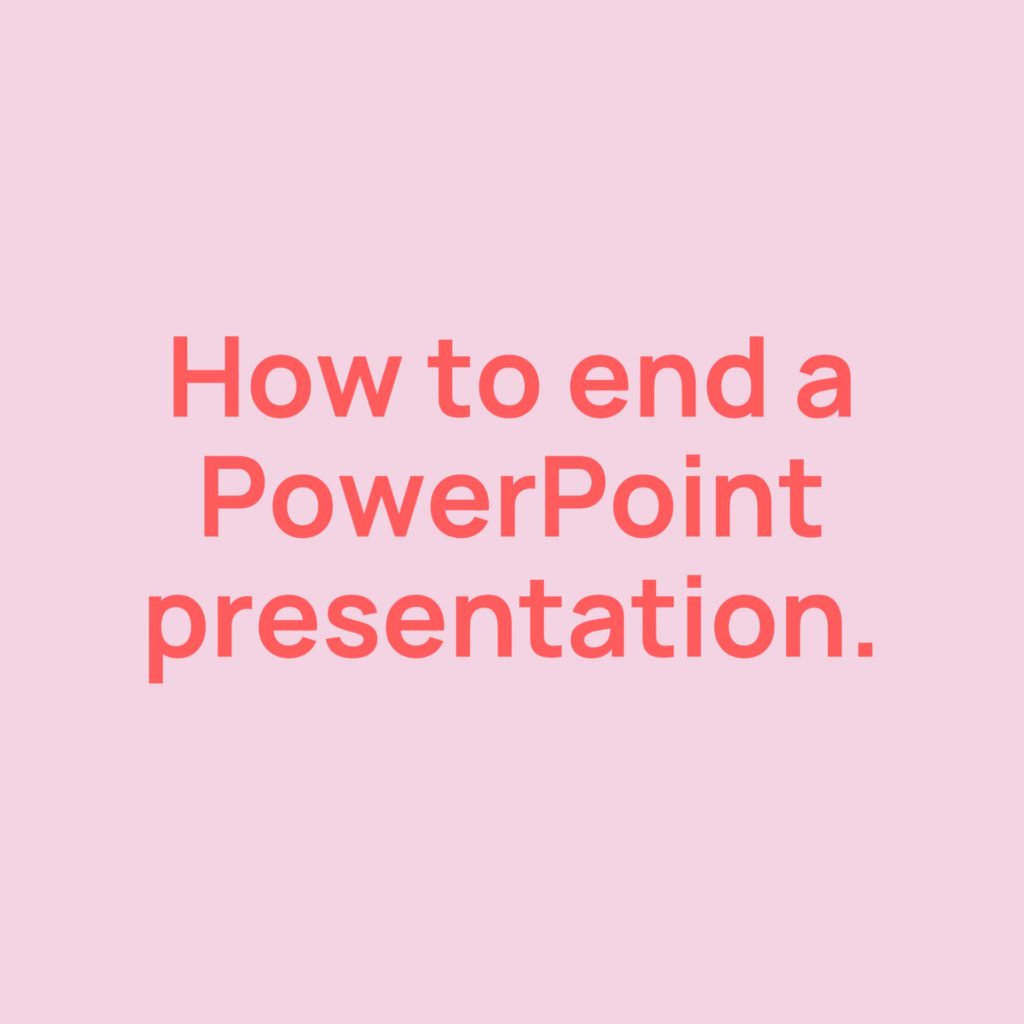
- Posted by hypepresentations
How to end a PowerPoint presentation.
By the time you reach the end of your PowerPoint presentation, it’s...
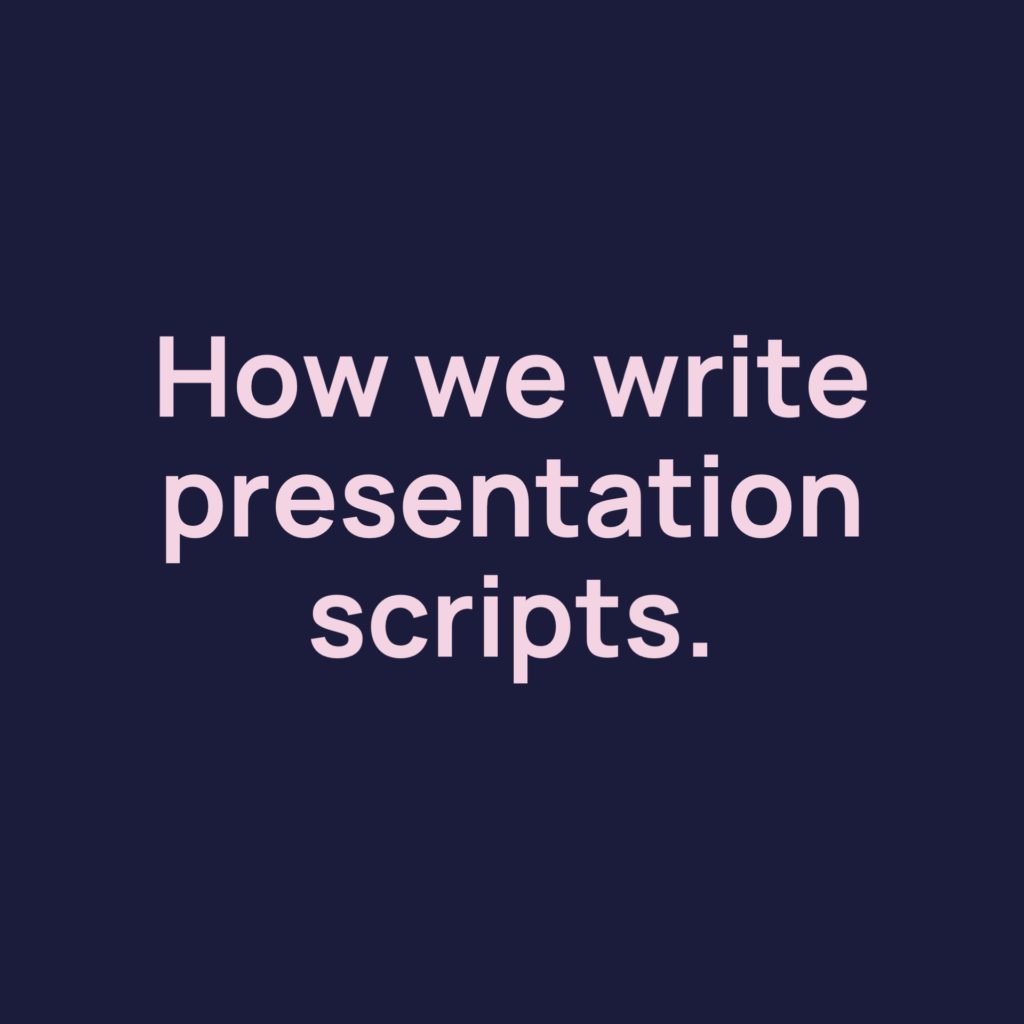
How we write presentation scripts that captivate audiences.
Having written thousands, this is our advice on how to write a...

- Theater-Based Techniques
- Dr. Gary Genard
- What Our Clients Say
- Client List
- Dr. Genard in the Media
- Leadership Communication
- Fearless Speaking
- Voice and Speech Improvement
- Presentation Coaching
- Speaking Virtually
- Presentation Skills
- Executive Speech Coaching
- The Benefits of Deep Breathing
- How to Calm Your Nerves Before Speaking
- Leadership Skills: The 5 Essential Speaking Techniques
- 5 Ways to Captivate an Audience
- The Body Language Rules: 12 Ways to be a More Powerful Speaker
- 4 Characteristics of an Influential Speaker
- 6 Skills Building Exercises for Effective Body Language
- 7 Tips for Overcoming Audience Resistance
- 5 Rules for Succeeding with PowerPoint
- Great Speaking? – It's About Performance Over Content!
- 5 Key Tools of Vocal Dynamics
- 5 Secrets of Powerful Body Language
- 10 Ways to Stay Fully Focused when Speaking
- 25 Words or Phrases to Avoid in Speeches and Presentations
- 6 Rules of Effective Public Speaking
- 7 Key Components of Successful Presentations
- 12 Easy Ways to Achieve Presence and Charisma
- 6 Skills Building Exercises Video
Gary Genard's
Speak for success.
"Be a voice not an echo." - Albert Einstein
How to Hook Your Audience with a Great Opener

Want to grab listeners' attention and engagement immediately? Here's how to hook your audience with a great opener!
"I speak to you for the first time as Prime Minister in a solemn hour for the life of our country, of our empire, of our allies, and, above all, of the cause of Freedom."
That's Winston Churchill, in his first broadcast speech as Prime Minister on May 19, 1940. Most of us don't have a topic as momentous as the "tremendous battle raging in France and Flanders" [i] to speak about—or a talent as great as Churchill's. But we have just as much need to hook our audiences at the start of our speeches and presentations.
Do you know the best practices for high-impact speaking? Discover how to motivate, inspire, and activate people! Get my Free Guide , "Six Rules of Effective Public Speaking."
So how are you doing in this department? It's not going too far to say that the success of your talk depends upon your getting listeners to get engaged and stay that way . That's what a speech "hook" or "grabber" is designed to do.
What Is a Speech Hook and How Does It Work?
A hook or grabber is the part of your presentation that compels an audience to sit up and pay attention. It should come at the beginning of your talk, where it can do the most good. Audiences have a lot on their minds as they prepare to listen to your remarks. They might in fact be attending a number of presentations that week. So you need to let them know right away that you're the speaker who is going to be interesting .
Once engaged, listeners will stay with you. That is, as long as the body of your speech doesn't fail to live up to expectations. But it's that hook that gets everything started.
Doesn't that sound like a formula for speaking success? To get there, see my 12 foolproof ways to grab an audience . It's all about knowing how to start a speech.
An Effective vs. Ineffective Opening
To grasp the difference between an opening that hooks and one that lets your listeners slip away, consider the following two speech openings. They're both from TED talks, and both are delivered by scientists. Which one grabs your attention?
(A) "We're going to go on a dive to the deep sea." [ii]
(B) "I study ants . . . in the desert, in the tropical forest, in my kitchen, and in the hills around Silicon Valley, where I live." [iii]
I'll bet it's the first one. Who wouldn't want to go on a virtual dive with oceanographer David Gallo to explore the ocean depths (choice A)? It's nice that biologist Deborah Gordon studies ants (choice B). But it doesn't sound compelling.
In fact her topic—the link between ants, the human brain, and cancer—is fascinating. But her opening keeps her speech firmly tied to the earth. Like every speech, however, it needs to get airborne right off the launch pad.

You Can Be Creative, Can't You?
So how can you make that happen in your own speeches and presentations? Here are what I believe are the four key elements of a successful speech hook, along with speech introduction examples. Keep in mind, they should occur as early in your speech as possible, so you tap into the critical first 60 seconds of a speech . What then does a good speech hook do?
(1) It resonates with the audience.
If your topic happens to be of general interest to everyone, this requirement should be easy. Sir Ken Robinson , for instance, pulls it off in just nine seconds in his TED talk, "Do Schools Kill Creativity?" Here's his opening, referring to the previous speakers at the event: "It's been great, hasn't it? I've been blown away by the whole thing. In fact . . . I'm leaving." [iv] Humor done well is always a winner. Equally successful is an opening that has special relevance to listeners (rather than being a topic that anyone can relate to). If you know your industry and your audience, you should be able to come up with a hook that absolutely resonates in this way.
(2) It surprises them.
Have you ever sighed resignedly because a speaker began, "My topic today is . . . " How differently we react when he or she approaches us from an unexpected direction! That speaker may elicit delight rather than heavy eyelids. Here is someone who does that: Gavin Pretor-Pinney in his TED Talk. He starts out: "Clouds ... have you ever noticed how much people moan about them?" [v] If I mention the talk is titled "Cloudy with a Chance of Joy," you'll understand his surprising yet logical choice of an opening.
(3) It's concise.
You want impact. You may tell a great story , but its effect will evaporate if it goes on too long. Always consider the total time you have and craft an opening that helps balance the talk as a whole. Mark Twain once began a speech following a toast to the New England weather by saying, "I reverently believe that the Maker who made us all makes everything in New England but the weather." [vi] (I bet that opening surprised his listeners, too.)
(4) It taps into something larger than your topic.
Remember, your topic is only your doorway to a place where you help change the world of your listeners. No speaker understood this better than President John F. Kennedy in 1961, when he said in the opening of his inaugural speech: "We observe today not a victory of party, but a celebration of freedom." [vii]
And here's the unmatched simplicity and understatement (and mischief) of Sojourner Truth's opening in her 1851 speech on women's rights, "Ain't I a Woman," which reflects on that issue as well as the other great one of the day: slavery.
"Well, children, where there is so much racket there must be something out of kilter." [viii]
Resonant, surprising, concise, and connected with a much larger issue. Take away that lesson to help change your own world—one speech, and one speech hook, at a time.
This article was originally published in 2016. It is updated here.
You should follow me on Twitter here .
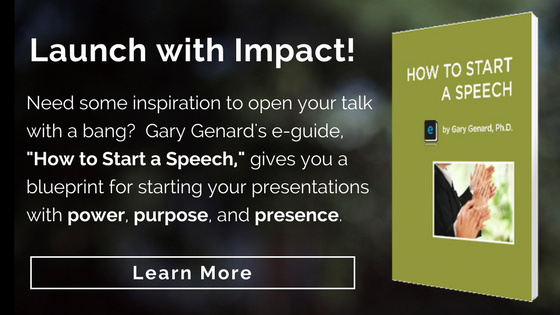
[i] http://www.winstonchurchill.org/learn/speeches/speeches-of-winston-churchill/91-be-ye-men-of-valour
[ii] http://www.ted.com/talks/david_gallo_shows_underwater_astonishments
[iii] http://www.ted.com/talks/deborah_gordon_what_ants_teach_us_about_the_brain_cancer_and_the_internet#t-11094
[iv] http://www.ted.com/talks/ken_robinson_says_schools_kill_creativity#t-12634
[v] http://www.ted.com/talks/gavin_pretor_pinney_cloudy_with_a_chance_of_joy
[vi] http://www.gutenberg.org/files/3188/3188-h/3188-h.htm#link2H_4_0012
[vii] https://www.youtube.com/watch?v=PEC1C4p0k3E
[viii] http://www.fordham.edu/halsall/mod/sojtruth-woman.asp
Tags: speeches , how to open a presentation , how to begin a presentation , how to start a speech , speech format , how to open a speech , how to organize a presentation , speech hook , how to organize a speech , how to start a presentation , speech hooks , speech grabbers , how to begin a speech , speech introduction examples
Subscribe to the blog
Follow gary genard.

- Training Techniques
Main Office - Boston
[email protected] 617-993-3410
- Executive Presentation Skills
- Rehearsal & Preparation
- Group Presentation Skills

3 Simple Speech Openers: How to Open a Speech
- Armani Talks
- December 19, 2021
- public-speaking
The beginning of the speech is crucial.
Mainly because the audience members are physically present.
But mentally?
That’s up for grabs.
The purpose of the speech opener is to bring the audience to the present moment.
Once you have captured their attention, now your speech moves in full effect.
However, with speech openers, it’s easy to suffer from analysis paralysis.
The mind is given too many options!
In this article, you’ll learn the theory behind the opener & a few clever ways to get started.
You prepared for the speech.
It’d be a shame if no one is paying attention.
A Great Opener
People are busy.
They are with their problems, not with your speech.
The goal of the opener is to bring them to the present moment with something that is CONGRUENT to the speech.
If you jump around like a monkey, will you have their attention?
But is it congruent to your speech?
Unless your speech is about monkeys, then no.
A great opener is something that gives some information, but not all of it.
It’s similar to when you tell your friend:
‘Dude, you won’t believe what Mikey was saying about you. You know what? I can’t tell you what he said. It’s just too bad!’
Your friend will feel a SURGE of feelings.
Those feelings are beyond logic.
By engaging those feelings, you have your friend’s attention.
A great opener is congruent to the speech.
And a great opener sparks curiosity .
The law of closure is when a human naturally wants to close the gaps in understanding.
When you present a curious situation, they will WANT to listen so they can close the gaps.
3 Potential Speech Openers
The following are simply suggestions.
Take the patterns that work for you.
But realize that these are only patterns.
Once you get a general flow for a few of the speech openers that I’m bringing up, it will be easier to open your speech.
Let’s start with a few.
1. Shocking Statistic
Statistics satisfy the intellect.
Shock satisfies the heart .
A combination of the 2 sparks curiosity.
‘Why a shocking statistic, Armani?’
A shocking statistic that is relevant to your speech.
If the talk is about nutrition .
Maybe you can drop a truth bomb about the likelihood of getting a heart attack for not eating properly.
It’s even better if you can cite a respectable source.
The audience members will be like:
‘Um…why is he telling me this? Is there something I should know?’
Once you bring up the opener, it’s easier to give a preview of what is to come.
An opener is not only a line in the beginning.
It’s an experience & a preview of the upcoming movie.
Never undermine the power of a laugh.
Whenever you make someone laugh, whatever you say next is being picked up by them.
It’s because adults live stressful lives.
They are looking for some type of escape.
A speech that opens with a joke automatically disarms these worked-up adults.
It helps them loosen up.
More importantly, a lot of the audience members are nervous.
They often assign a high social value to the speaker.
Then their narrative mind is like:
‘What if this high-value speaker calls on me & makes me look like an idiot?’
By telling a joke from the beginning, you prove yourself to not to be a threat.
It’s easier to warm up to you now.
In June 2018, I recall this public speaking coach telling a story about:
How people lack heart.
He was saying this story in a direct & fed-up tone.
This speaker was tired of people quitting too soon & not taking their public speaking journey seriously.
I looked around me.
Business owners, CEOs & local entrepreneurs giving the face of:
‘Seems like he is talking to me.’
This speaker pulled a veteran move.
He gave the audience a wake-up call from the beginning by sharing a story that resonated with them.
However, he never directly insulted them.
His story had a relatable character that the audience could see themselves in.
This is something that you can do too.
Create a story with a relatable character that the audience members see themselves in.
Just like when you make a person laugh, they pay attention.
When you remind someone of themselves, they pay attention.

Interactive Exercise
These are 3 suggestions from my end:
- Shocking statistic
I am intentionally not giving you a list of 50 different speech openers.
‘Why not?’
To help you avoid analysis paralysis.
Try this really quick.
Close your eyes.
Pick a topic.
What is it?
‘Sharks.’
With your eyes closed, create a scenario where a speaker is presenting a speech about sharks to you.
How are they opening the speech to capture your attention?
Your body is the compass!
Create a few scenarios of how the speaker opens their speech.
Which ones are hooking you mentally & physically?
Think of a few openers that fit these criteria.
You’ll start to develop a FEEL for a good opener.
Build Captivating Speech Openers
The middle & end of the speech is impactful.
However, it’s the opener that sets everything in motion.
It allows you to capture the minds of the audience.
Bring them to the present moment.
Give a preview of the talk.
Then proceed to the middle and end.
Never sleep on the opener.
But don’t take it so seriously to a point where you are suffering from analysis paralysis.
The right opener will hit you on the chest.
You’ll know when you have it.
Meanwhile, develop patterns that work for you.
What allows you to feel hooked?
Whether it’s a topic on sharks.
Or a topic on yourself.
Once your body begins guiding you…
It’ll be easier to spot how to find the perfect speech opener.
For more strategies to improve your public speaking skills, be sure to check out the Speaking Wizard.
In this ebook, you ‘ll learn more about:
- Managing speech anxiety.
- Creating the beginning, middle & end of a speech.
- And delivering your talk with the utmost confidence!

– ArmaniTalks
Join the armanitalks newsletter, level up mentality : a guide to re-engineer your mindset for confidence.
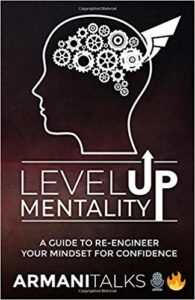
BUY ON AMAZON

Leave a Reply Cancel reply
Your email address will not be published. Required fields are marked *
Save my name, email, and website in this browser for the next time I comment.

Join the ArmaniTalks 🎙️🔥 Newsletter
Download free.
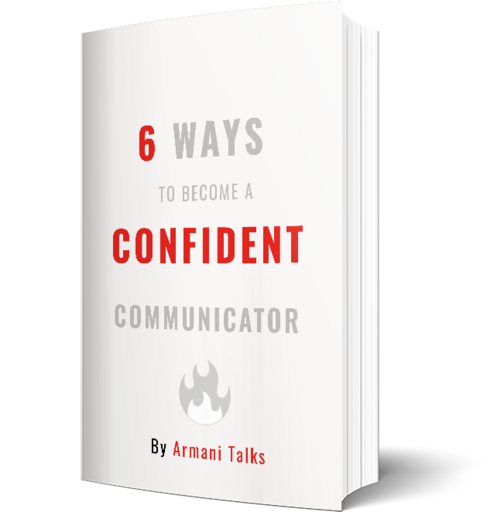
Privacy Overview

Speech: ‘Be the light that brings hope and that accelerates progress towards an equal, sustainable, and peaceful future’
Opening remarks delivered by un women executive director sima bahous at the un official commemoration of international women’s day, 8 march 2024, un headquarters.
- Share to Facebook
- Share to Twitter
- Share to LinkedIn
- Share to E-mail
[As delivered.]
I will begin on this International Women’s Day with a moment of reflection for all the women and girls killed in wars and conflicts that are not of their making.
Wars and conflicts are eroding the achievements of decades of investments in gender equality and women’s empowerment. From the Middle East, to Haiti, to Sudan, Myanmar, the Sahel, Ukraine, Afghanistan, and elsewhere in the world, women pay the biggest price of conflicts.

Conflict is inherently violent, but for women and girls ever more so, including in sexual and gender-based ways. This is intolerable. No woman or girl anywhere, ever, should experience sexual violence or any form of violence. UN Women, alongside everyone here, condemns it unequivocally.
The need for peace has never been more urgent. We salute women everywhere who strive to bring peace every day, who are human rights activists, who are human rights defenders, who lead and fight for change.
This year’s International Women’s Day sees a world hobbled by confrontation, fragmentation, fear, and, most of all, inequality.
Persistent poverty gaps continue to exist worldwide, and women bear an increasingly heavy burden. One in every ten women in the world lives in extreme poverty. Poverty has a female face.
Men own 105 trillion dollars [USD] more wealth than women. They dominate the corridors of power.
And the pushback against gender equality is well resourced and powerful, fuelled by anti-gender movements, de-democratization, restricted civic space, a breakdown of trust between people and state, and regressive policies and legislation.
We all feel this pushback acutely. Our values and principles have never been as challenged as they are today.
I thank all of you for lending your energies to this struggle, to the cause of women’s rights and gender equality, and I thank you all for joining us in pushing forward against the pushback.
This year’s International Women’s Day calls us all to invest in women and girls and to accelerate progress.
It is only by investing in women and girls that we will meet the challenges we face, be they economic-, conflict- or climate-related.
Investing in women and girls is indisputably the best pathway to the achievement of the Sustainable Development Goals , to peace and security.
When more women are economically empowered, economies grow.
Where women are equally represented in government, governance thrives.
Where women are free to live their lives without the perpetual threat of violence, families flourish, and businesses benefit.
Where women have a bigger say in peace processes, peace is found sooner and is more durable.
But in spite of these clear facts, we continue to stubbornly invest in weapons more than we invest in women and girls.
We continue to say gender equality can be postponed for “later”, as we watch the world fall further off track, and even “later” is postponed.
In the coming months and year, we have a collective opportunity to recommit ourselves to gender equality. The Summit of the Future presents an opportunity to centrally place gender equality across discussions on development, financing, technology, and peace and security. The thirtieth anniversary of the Beijing Platform for Action next year has the potential to be a watershed moment for increased and accelerated action to make truth of the promises made 29 years ago. I welcome the Secretary-General’s announcement of the Gender Equality Acceleration Plan. Please count on UN Women as your partners in this.
The International Women’s Day this year has a call. And this call is clear and compelling. For every woman and girl, we ask that we finally make the best investment we can: financing gender equality and unlocking its dividends for all. More than 100 million women and girls could be lifted out of poverty if governments prioritized education, healthcare, fair and equal wages, and expanded social benefits. We know that when women raise their voices it is for equality, for their rights and for the rights of others, for peace and justice for all. They fight to leave a better world behind them for all the people and for our shared planet.
On International Women’s Day we elevate their voice. We elevate their cause, and our cause. We commit to affording it the resources it deserves and demands.
Allow me before I end to echo the call of the Secretary-General, the President of the General Assembly, the Chair of the Commission on the Status of Women: We need a humanitarian ceasefire in Gaza now. More than 9000 women have been killed in Gaza, and this must stop. We cannot return to a path to peace without justice for all survivors of this conflict—and I say all survivors of this conflict—and without an end to the indiscriminate violence in Gaza.
I began my remarks today with a moment of reflection. I end my remarks with a call for all of us to be the light that brings hope and that accelerates progress towards an equal, sustainable, and peaceful future. For all people. For every woman and for every girl, everywhere. I know that together, it is within our reach.
I thank you.
- 2030 Agenda for Sustainable Development
- Executive Director
- Conflict, war
- Commission on the Status of Women
- Sustainable Development Goals (SDGs)
- Financing for gender equality
- Economic empowerment
- Gender equality and women’s empowerment
- Governance and national planning
- Intergovernmental processes
- Peace and security
- UN Women administration
Related content
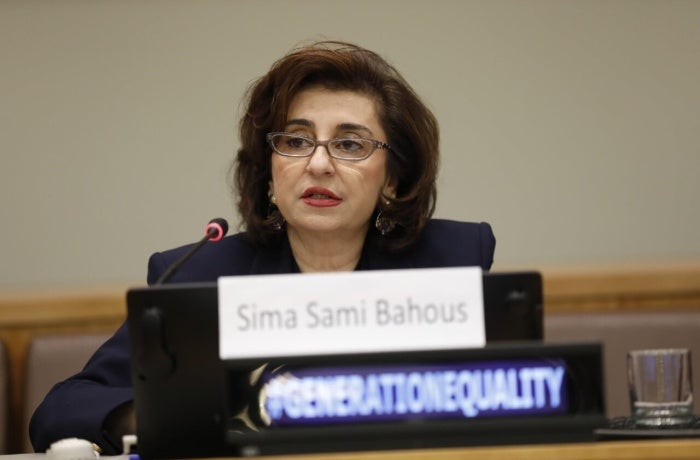
Speech: Ambitiously proactive – Generation Equality brings hope to stalled progress and financing
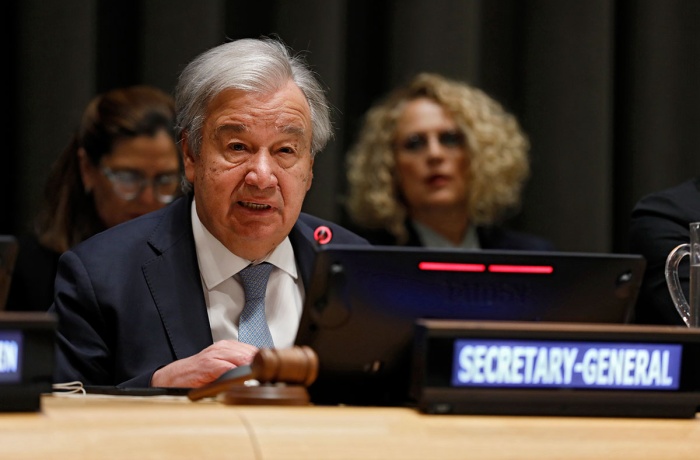
Speech: ‘The patriarchy may be pushing back, but so are we’
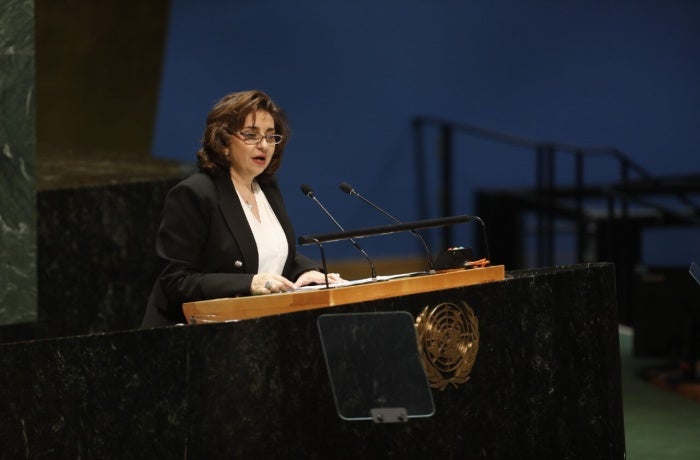
Speech: ‘We can and must choose to end poverty for women and girls’
- Skip to main content
- Keyboard shortcuts for audio player
Biden's State of the Union address is the opening speech of the presidential election

Asma Khalid
President Biden delivered an address seen as key to his reelection campaign. We look at how it went.
A MARTÍNEZ, HOST:
Was it a State of the Union address or a campaign speech?
(SOUNDBITE OF ARCHIVED RECORDING)
PRESIDENT JOE BIDEN: My fellow Americans...
UNIDENTIFIED CONGRESS MEMBERS: Four more years. Four more years.
BIDEN: ...The issue facing our nation isn't how old we are. It's how old are our ideas. Hate, anger, revenge, retribution are the oldest of ideas.
LEILA FADEL, HOST:
Speaking to a joint session of Congress last night, President Biden rejected both concerns over his age and the man he referred to only as his predecessor, former President Donald Trump.
MARTÍNEZ: Joining us now for analysis of the president's speech is NPR White House correspondent Asma Khalid. Now, this week feels like the unofficial start of Trump versus Biden part two. Nikki Haley suspends her campaign, leaving Trump as the presumptive Republican nominee. And then Biden did not say Trump's name 13 times in last night's State of the Union. So what stood out to you?
ASMA KHALID, BYLINE: Well, there were a lot of expectations on Biden last night, not just for the content of his speech, but for the performance, for the delivery. And Biden was feisty. He was willing to engage in unscripted moments with Republicans in the crowd. He did have some stumbles, though. And notably, toward the end, he took on the issue of his age directly.
You know, this was a speech that, in my view, offered contrast with Republicans on everything from the economy to abortion to immigration. And unlike some of the previous State of the Unions that Biden has delivered, this speech was not about trying to find common ground with Republicans. You know, at the same time, there were a couple of moments where Biden asked Republicans to work with him, for example, on more aid for Ukraine and a border bill. Though I should point out that immigration legislation is dead in Congress.
MARTÍNEZ: Yeah. So on immigration, because that's been one of the GOP's favorite avenues of attack on the president, how did he try to address that?
KHALID: Biden blamed House Republicans for blocking that bipartisan border deal last month, and he did criticize Trump rather directly on this issue - again, not by name. But he talked about how Donald Trump has spoken about immigrants as poisoning the blood of the country. But really, A, the moment that stood out to me was when Congresswoman Marjorie Taylor Greene of Georgia shouted at Biden about Laken Riley. She's a nursing student who was killed last month, and an undocumented immigrant has been arrested for the crime.
MARJORIE TAYLOR GREENE: Laken Riley.
BIDEN: I...
BIDEN: Lincoln Riley (ph), an innocent young woman who was killed by an illegal. That's right.
KHALID: You know, this back-and-forth, I think, shows just how complicated it is for Biden to navigate immigration. He is already facing criticism from some within his own party for his get-tough approach. And using the term illegal is only going to underscore that concern. You know, and at the same time, it is unclear whether he'll win over independent voters who have identified border security as one of their top priorities.
MARTÍNEZ: Now, President Biden has come under a lot of pressure from some Democrats on how he's handled Israel's war against Hamas. What did he have to say about Gaza?
KHALID: Well, he's been criticized for showing a lack of empathy for Palestinians. And last night, he spoke in more compassionate terms about Palestinians than we have heard from him before. He referred to the situation as heartbreaking and spoke of orphaned children, families without food. He also spoke directly to Israeli leaders, saying that humanitarian assistance cannot be a bargaining chip. And he outlined plans to establish a temporary pier on the Gaza coast to get humanitarian aid into the region via sea. You know, ultimately, I will say on this issue, though, A, what Biden wants, what his White House really wants is a temporary cease-fire to free hostages and allow more aid into the Gaza Strip via land.
MARTÍNEZ: That is NPR's Asma Khalid. Thanks a lot.
KHALID: Good to talk to you.
Copyright © 2024 NPR. All rights reserved. Visit our website terms of use and permissions pages at www.npr.org for further information.
NPR transcripts are created on a rush deadline by an NPR contractor. This text may not be in its final form and may be updated or revised in the future. Accuracy and availability may vary. The authoritative record of NPR’s programming is the audio record.
Oscars 2024: Jimmy Kimmel Delivers Opening Monologue, Pokes Fun at 'Barbie' Snubs
Jimmy kimmel spills behind-the-scenes oscar secrets: naked john cena bit almost got cut, 'the valley': jax taylor promises his & brittany's separation is 'not a publicity stunt' (exclusive), kaia gerber says she leaned on kristen wiig to prepare for 'snl 1975' (exclusive), why savannah chrisley wants to pursue law degree amid parents' legal fight, celeste o'connor is 'forever grateful' for 'madame web' despite disappointing debut, bill murray names a very unexpected choice to play him in 'snl' movie (exclusive), savannah chrisley shares mom julie's 'the masked singer' reaction from prison (exclusive), dan aykroyd reacts to dylan o'brien playing him in 'snl 1975' (exclusive), *nsync reunion justin timberlake brings out the boy band for surprise show -- watch, finn wolfhard on his ‘snl 1975’ role (exclusive), 'ghostbusters': paul rudd geeked out over working with og cast (exclusive), palace deemed untrustworthy source after kate middleton photoshop debacle, ‘love is blind’ where are they now jimmy & chelsea, ad & clay no longer on ‘good terms’ (source), 'bad boys 4': vanessa hudgens promises 'belly laughs' about will smith and martin lawrence's age, ‘girls5eva’ cast reacts to netflix saving show from cancelation | spilling the e-tea, inside ‘grey’s anatomy’s medical bootcamp (exclusive), vanessa hudgens on why her singing in 'french girl' felt 'very cringe' (exclusive), regina king breaks her silence on son ian’s death 2 years after his suicide, 'the equalizer': queen latifah reunites with mike epps to go undercover (exclusive), 'the crow' official trailer, who is rose hanbury why her name is coming up amid royal drama, the host kicked off sunday's show in style, marking his fourth time as emcee for the star-studded gala..
Jimmy Kimmel took the stage on Sunday at the 96th annual Oscars , and kicked off the big show with a fun, exciting monologue that showed just why he's been a perennial favorite to host the star-studded gala.
Kimmel began by poking fun at the show's earlier start time and always-lengthy run time, quipping, "Thank you for having me back and congratulations to each and every one of you for making it to the Academy Awards. And for making it on time. The show, as you know, is starting an hour earlier this year, but don't worry, it will still end very, very late. In fact, we're already five minutes over and I am not joking."
He also called out the high-profile snubs Barbie faced going into this year's show, stating, "Now Barbie is a feminist icon, thanks to Greta Gerwig, who many believed deserved to be nominated for best director tonight."
As she got a round of applause, Kimmel joked, "Hold on a second. I know you're clapping, but you're the ones who didn't vote for her, by the way. Don't act like you had nothing to do with this."
"Margot Robbie and Ryan Gosling are here tonight. Look, kids, it's Barbie and Ken sitting near each other," Kimmel continued. "Ryan, Margot, I want you to know that even if neither one of you wins an Oscar tonight, you both already won something much more important -- the genetic lottery."
Kimmel also didn't shy away from mixing some political commentary into his monologue a few times.
"In Poor Things , Emma [Stone] played an adult woman with the brain of a child -- like the lady who gave the rebuttal to the State of the Union on Thursday night," Kimmel joked, referring to Sen. Katie Britt's widely derided GOP response .
Toward the end of his monologue, Kimmel also addressed the challenges Hollywood faced this year, with both the WGA and SAG strikes that effectively shut down the industry for several months.
"We can be proud of the fact that this long and difficult work stoppage taught us that this very strange town of ours, as pretentious and superficial and is can be, at its heart is a union town," Kimmel said. "It's not just a bunch of heavily Botoxed, Hailey Bieber smoothie-drinking, diabetes prescription-abusing, gluten-sensitive nepo babies with perpetually shivering chihuahuas."
"This is a coalition of strong, hard-working mentally tough American laborers. Women and men who would 100 percent die if we even had to touch the handle of the shovel," Kimmel said. "But the reason we were able to make a deal is because of the people who rallied beside us. Before we celebrate ourselves, let's have a very well-deserved round of applause for the people who work behind the scenes, the teamsters, the truck drivers, the lighting crew, gaffers, grips, that's right -- all the people who refused to cross the picket lines."
As Kimmel said this, he welcomed out a large group of union laborers onto the stage, and led the audience in a standing ovation.
"In your upcoming negotiation, we will stand with you, too," Kimmel promised. "And also, I'm going to make sure the show goes really long tonight, so you get a ton of overtime."
Kimmel spoke with The Hollywood Reporter last week, as he prepared for the high-profile gig, and he likened the emceeing job to taking a flight on a plane .
"You don’t think too much about it if it went well," he explains to THR . "If it was terrible, you tell everyone you know about it — the turbulence, the delay, how long you had to sit in the airport waiting. We just want a flight that’s on time and cocktails are served and nobody throws up."
Kimmel previously hosted the ceremony in 2017, 2018 and 2023. Molly McNearney, Kimmel's wife, who serves as the Jimmy Kimmel Live co-head writer, will executive produce the telecast.
The Jimmy Kimmel Live! host released a statement when news first broke that he'd be helming the broadcast, joking, "I always dreamed of hosting the Oscars exactly four times."
The 2024 Academy Awards , hosted by Jimmy Kimmel, airs live from the Dolby Theatre in Los Angeles on Sunday, March 10, at 4 p.m. PT/7 p.m. ET on ABC. Follow along at ETonline.com for full Oscars coverage, including red carpet arrivals, the complete winners list and more.
Updates on Celebrity News, TV, Fashion and More!
RELATED CONTENT:
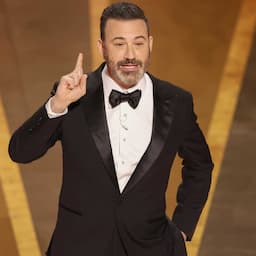
Jimmy Kimmel Thinks Jo Koy Should Get a Second Chance at Golden Globes
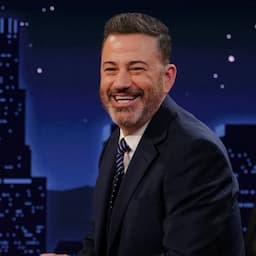
Jimmy Kimmel Hints at the Possible End of His Late Night Show
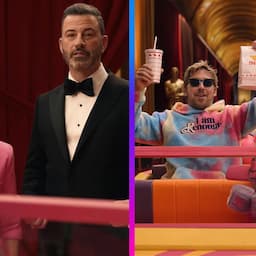
Jimmy Kimmel Subtly Mentions 'Barbie' Snubs in Oscars Promo
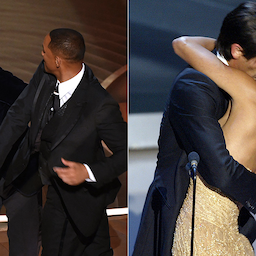
10 Biggest Oscars Controversies: Will Smith, Envelope-Gate and More

- Jimmy Kimmel
Latest News
- International edition
- Australia edition
- Europe edition

Jimmy Kimmel skewers Gerwig snub and praises Messi the dog in Oscars monologue
Late-night host takes aim at Robert Downey Jr and Anatomy of a Fall dog in 12-minute speech kicking off awards ceremony
- Oscars 2024: full list of winners
- Full report: Oppenheimer wins best picture
Jimmy Kimmel ’s opening monologue at the 96th Academy Awards took its usual digs at many of Hollywood’s most famous faces, looked back at the 2023 Writers Guild of America strike, and even celebrated the most famous dog in the US right now.
For Kimmel’s fourth time at the Oscars’ helm, having run the show in 2017 , 2018 and last year, he kicked off his 12-minute-plus speech by paying homage to Greta Gerwig and Barbie – lambasting the clapping audience for not nominating Gerwig in the best director category in the process.
“Don’t act like you had nothing to do with this,” he quipped.
After giving his verbal flowers to Oppenheimer director Christopher Nolan and stars Cillian Murphy and Robert Downey Jr, Kimmel took aim at Downey. Kimmel said Downey, who is nominated for best supporting actor, is currently at his “highest point”, or “one of his highest points” – in an obvious reference to Downey Jr’s past history of drug use.
As the camera panned to Downey Jr, he gestured to Kimmel to move along.
Perhaps the star of Kimmel’s monologue was Messi , who iconically played Snoop in this year’s quintuple-nominee Anatomy of a Fall. After showing the canine happily seated in the audience, Kimmel said of Messi’s performance: “I haven’t seen a French actor eat vomit like that since Gerard Depardieu.”
Among other remarks about Robert de Niro, Jodie Foster, Bradley Cooper and Steven Spielberg, Kimmel also squeezed in a politically prescient remark about Katie Britt, the 42-year-old senator from Alabama who gave the Republican response to president Joe Biden’s State of the Union address last week.
On addressing Emma Stone’s role in best picture nominee Poor Things , Kimmel joked: “Emma Stone played an adult lady with the brain of a child, kinda like the lady that gave the State of the Union rebuttal.”
The culmination of Kimmel’s speech was a several minute ode to the 148-day writers’ strike that took place over five months in 2023.
“We learned a lot while out on the picket lines,” Kimmel said, noting the historic agreement that the Writers Guild of America (WGA) came to.
He continued: “This long and difficult work stoppage taught us that this very strange town of ours – as pretentious and superficial as it can be at its heart is a union town. It’s not just a bunch of heavily Botoxed, Hailey Bieber-smoothie drinking, diabetes prescription abusing, gluten-sensitive nepo babies with perpetually shivering chihuahuas. This is a coalition of strong, hardworking mentally tough American labourers; women and men who would 100% for sure die if we even had to touch the handle of a shovel. But the reason we were able to make a deal is because of the people who rallied besides us. So, before we celebrate ourselves let’s have a very well deserved round of applause for the people who work behind the scenes.”
Kimmel then brought out those who are working behind the scenes of the 2024 Oscars as the audience applauded and gave a standing ovation.
Sunday evening’s broadcast is slated to see a panoply of big-name celebrity presenters outside of Kimmel, including Dwayne Johnson, Jennifer Lawrence and Zendaya as the Academy attempts to boost audience numbers for the Oscars telecast.
Read more about the 2024 Oscars:
- Oscars 2024
- Jimmy Kimmel
- Awards and prizes
Most viewed
Advertisement
Biden Spars With Marjorie Taylor Greene About a Murder He Said Was Committed ‘by an Illegal’
The far-right representative from Georgia with a history of interrupting the president at the State of the Union, shouted at Mr. Biden about crimes committed by undocumented migrants, leading him to go off script.
- Share full article

By Chris Cameron
- March 7, 2024
President Biden jousted during his speech with Representative Marjorie Taylor Greene, a far-right representative with a history of interrupting recent State of the Union addresses, about crimes committed by undocumented migrants, saying that in one recent incident a young woman “was killed by an illegal.”
Mr. Biden’s use of the term triggered immediate backlash from liberal Democrats and immigration advocates, who accused the president of dehumanizing undocumented migrants by highlighting the killing and using the term “illegal.”
Mr. Biden’s remarks to Ms. Greene caused the president to veer from his prepared script. Mr. Biden had originally intended to draw attention to Donald J. Trump — his Republican predecessor and likely opponent in November — and his caustic language about immigrants. He had been expected to say in his speech: “I will not demonize immigrants saying they ‘ poison the blood of our country ’ as he said in his own words,” referring to the former president, who was sharply criticized late last year for repeating language that resembled that used by leaders like Hitler or Mussolini , as well as white supremacists.
But Ms. Greene, a Republican from Georgia, heckled Mr. Biden before he got to that part of the speech during a segment on immigration policy. Mr. Biden was calling on Republicans to support a bipartisan border deal that had been negotiated in the Senate but abandoned by Republicans who had asked for the legislation.
Wearing a bright red “Make America Great Again” hat and pins on her lapel referring to Laken Riley, a 22-year-old nursing student from Georgia who was killed in February , Ms. Greene shouted at Mr. Biden, who had picked up one of the pins honoring Ms. Riley on his walk to the rostrum to give his speech.
Mr. Biden then turned his speech to address the killing. Authorities have charged a Venezuelan migrant — who crossed into the United States illegally and was then released on parole — in the case.
“An innocent young woman who was killed by an illegal. That’s right,” Mr. Biden said to Ms. Greene, using a term to refer to the migrant that is favored by Republicans and criticized as dehumanizing by many Democrats.
But he quickly added there are thousands of other murders who he appeared to attribute to “legals,” people who legally reside in the United States. Mr. Biden and White House officials have made similar comments on migrant crime in the past.
Democratic lawmakers and immigration advocates criticized Mr. Biden for engaging with Ms. Greene on the subject, and for using the word “illegal” to refer to undocumented migrants, many of whom are seeking political asylum or a humanitarian parole.
“We were shocked to hear the president echo the words of anti-immigrant extremists,” the National Immigrant Justice Center said in a statement . “Manipulating a personal tragedy for political gain in this way is dangerous. Conflating immigration status with criminality is racist and dehumanizing.”
Kica Matos, president of the National Immigration Law Center, similarly criticized Mr. Biden, saying he “parroted dehumanizing Republican rhetoric about immigrants.”
Representative Pramila Jayapal, the chairwoman of the Congressional Progressive Caucus, said to an Associated Press reporter that she wished “he hadn’t engaged with Marjorie Taylor Greene and use the word illegal.”
“As a proud immigrant, I’m extremely disappointed to hear President Biden use the word ‘illegal,’” said Representative Chuy García , Democrat of Illinois.
Mr. Trump had deplored the death of Ms. Riley, but even border authorities who worked for the former president during his term in office have said most migrants who cross the border are vulnerable families fleeing poverty and violence rather than criminals. Studies have also repeatedly shown that migrants are less likely to commit crimes than people born in the United States.
“To her parents, I say my heart goes out to you. Having lost children myself, I understand,” Mr. Biden continued.
Mr. Biden went on to continue his speech, returning to his prepared remarks. “I will not demonize immigrants, saying they are poisoning the blood of our country,” he said to applause.
Zolan Kanno-Youngs contributed reporting.
Chris Cameron covers politics for The Times, focusing on breaking news and the 2024 campaign. More about Chris Cameron
Our Coverage of the State of the Union
In a raucous state of the union address, president biden sought to reassure americans that at 81, he is ready for a second term..
Biden’s Performance: The president was feisty and displayed a newly found solemnity and blunt combativeness . Republicans jeered from their seats. And Democrats enthusiastically cheered their presidential nominee, even as a few aired their grievances about the war in Gaza .
A Contrast With Trump: In his speech, Biden launched a series of fiery attacks against former President Donald Trump, a competitor whom he did not mention by name but made clear was a dire threat to American democracy and to stability in the world .
Middle East Crisis: During the State of the Union, the president announced the construction of a port to deliver aid to Gaza. That decision, as well as the authorization of aid airdrops on the territory, raised uncomfortable questions about America’s role in the war.
Seeking a Tricky Balance: As he spoke to Congress, Biden tried to demonstrate that he could be tough on the border without demonizing immigrants .
A Rare Mention: Biden briefly referenced a topic that he has often been reluctant to embrace: marijuana. His words could signal a move toward promoting the efforts he has made to liberalize cannabis policy.
Style Choices: Democratic women in suffragist white , Marjorie Taylor Greene in MAGA red. The sartorial statement-making on the congressional floor was clear .
Arts Summer Camps
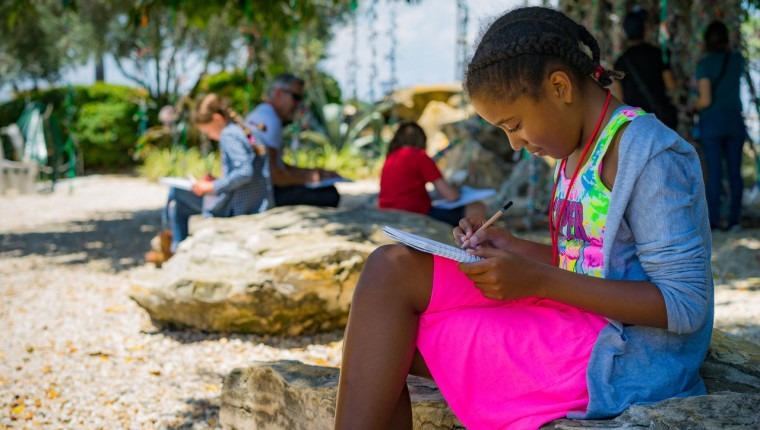
By Carlene Cobb
Arts summer camps in pinellas county, where young artists enjoy success and develop their talents.
. . . As the curtain falls on another school year, Pinellas County students and families focus on summer plans, including exciting new Arts Summer Camps. Young artists look forward to making new friends while delving into the world of visual and performing arts where they hone their skills in drawing, painting, pottery, dancing, playing music, acting, mural design, storytelling, creative writing and beyond.
Arts Summer Camps also polish valuable life skills – creative problem solving, collaborating, socializing, building self-confidence and feeling successful.
Parents know well the wisdom of keeping young ones engaged and motivated with fresh, fun projects on sultry summer days. In Pinellas County, there are so many options — something for everyone, in grades K-12. . . .

Scholarships & Grants
. . . Scholarships and grants are available for students who qualify through Creative Pinellas , the St. Petersburg Arts Alliance’s Funding Futures program (see details at the end of this article), individual arts camps and resources including the Dunedin Youth Guild .
“These grants continue to offer a way to get more funds into the communities where they are needed to enrich lives,” says Barbara St. Clair, CEO of Creative Pinellas.
Applying for a grant or scholarship is easy to do online. Each program’s webpage provides detailed information about eligibility and how to complete the application process.
For Creative Pinellas grants, you can find the details at creativepinellas.org/opportunity/summer-camp-grant-2022 . You can email [email protected] with any questions. . . .
Health & Safety
. . . Arts Summer Camp venues continue to follow the most current COVID-19 safety precautions, which will be implemented and required of participants and guests on the campus. Protocols are listed on each camp’s website, so participants will know what is required to keep everyone safe and well.
Check for updates and possible adjustments to safety requirements when camps begin in May. . . .

. . . Dunedin Fine Art Center
Summer ART Academy dfac.org/kids-corner/summer-camp
. . . Celebrating his 25th year with Dunedin Fine ART Center’s Summer ART Academy, Director of Youth Education Todd Still describes the program as “one of the premier arts summer camp programs in the Tampa Bay area, with some of the best artists and art educators in the area – multi-media experts with skills from painting to clay to drawing and dreaming.”
Every year, Still infuses popular themes (like Dinosaurs) with new, imaginative elements so art camps are fresh each year with updated variations.
“We continue to offer in-person summer camp experiences with a whole new lineup of groovy themes, such as P andas and Pyramids , Shark Week’s Sharky Business (featuring big city sharks in suits, ties, laptops and briefcases), and Sloths and Snakes on Saturn . These unique and exciting combinations promote creativity and ingenuity that materialize in the students’ artwork, whether it be 3-dimensional, 2-dimensional, digital or even in a play or skit.” . . .. .
Camps are offered May 31 through August 5, Monday through Friday, from 9 am to 3 pm and are divided into age groups.
At DFAC, age groups are: Mini Masters (4 1/2-5), Sizzlin‘ Summer (6-10), Mural Madness (8-10 and 11-14), iPad Explorations (8-10), Arts in Motion (8-12) and Art Squad (11-14). Before and aftercare is available. Costs range from $175 to $225. . . .
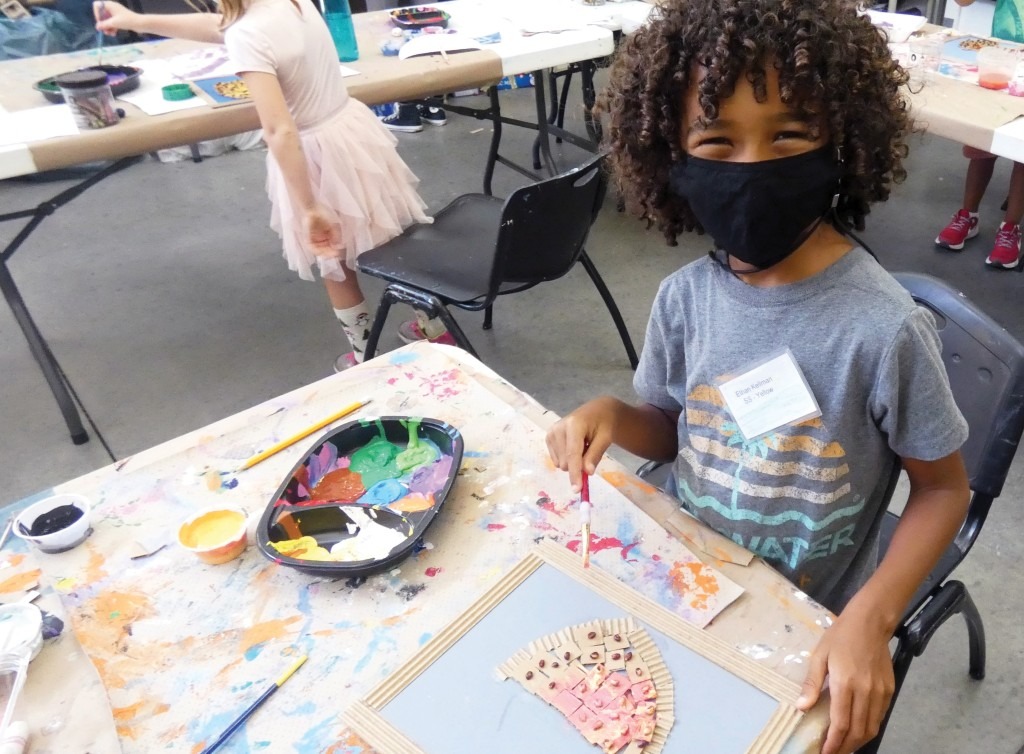
. . . Dunedin Fine Art Center is located at 1143 Michigan Blvd, Dunedin FL 34698, 727-298-3322.
You can find complete camp details, extended care and lunch options, and information on DFAC’s own scholarship program at dfac.org/kids-corner/summer-camp . . . .
Parent Reviews
“Thank you very much for all that you are doing to ensure our children’s safety. It brings us such joy to hear about our daughter’s day at camp. Looking forward to our return mid-July.”
“Thank you so much for all you are doing to keep our kids safe while getting their creativity on!” . . .
Arts Conservatory for Teens
Creative Workforce Summer Intensive artsconservatoryforteens.org/creative-workforce-summer-intensive . .
Designed to develop students’ skills and techniques, this program also provides education about the business side of the creative workplace and the importance of self-care through health, wellness and mindfulness.
“We take a close look at corporate concerns in the creative workplace because artists need to know the value the arts bring to a community and to a corporate setting,” says Alex Harris, PhD, CEO and Co-founder of Arts Conservatory for Teens (ACT). “And they need to understand the importance of health and wellness, mentally and physically.” . . .
Arts Conservatory for Teens is located at 1111 18th Avenue South, St. Petersburg FL 33705. For questions, email [email protected] or call 727-346-8233. . . .
ACT Creative Workforce Summer Intensive Reviews
“The ACT program really helped Lily acclimate and find a friend base of kids who had similar interests. It has given her an avenue of creativity and allowed her to express herself in theater which she has always loved and never had the opportunity to do so before.” — Mother of ACT Student
“The Arts Conservatory for Teens works. It is giving children a dream, a chance and a hope.” — USF Dean of College of Arts and Sciences Frank Biafora, PhD
. . . . . .
Beach Art Center: Real. Life. Fun.
Creative Kids Summer Camp beachartcenter.org/kids-camp

Creative Kids Summer Camp is a full day camp for students entering 1st through 6th grades, June 6 through August 5, Monday through Friday, 9 am to 3 pm. Extended care before and after camp is not available. Fee: $200/week for Beach Art Center members; $225/week for non-members.
Camp descriptions, policies and COVID-19 safety requirements are posted on the website . Parents are encouraged to read all the information and check for updates to CDC recommendations.
Beach Art Center Art Camps Offered This Summer
Week 1, June 6-10: Exploring the “ISM’S” – Students create colorful landscapes, seascapes and sea animals with oil and chalk pastels, watercolor and acrylics. Or Amphibian Life – Students work in the pottery studio creating ceramic pieces inspired by nature while exploring the fascinating world of amphibians.
Week 2, June 13-17: The Wonderful World in Your Yard – Painting, coloring, cutting, gluing and pasting a pop-up display of treasures discovered in students’ own backyards. Or Coral Reef Life Clay Camp – Students learn about coral and its role in the ecosystem while creating sketches, paintings and ceramic representations of coral reefs
Week 3, June 20-24: Self Portraits – Students choose a famous artist and create a portrait of themselves in that artist’s style. Or Safari to Adventure – Students study the colorful painting style of Henri Rousseau and create art in his style, using acrylic paints, markers and colored pencils. Or Clay Camp (3rd–6th graders only) where students use the wheel and slab roller, learn glazing, pugging and decal work. Messy hands are just fine!
Week 4, June 27-July 1: Space is Spectacular – Students explore and create visions of outer space, planets, black holes, rockets and stars. Or Mythological Imaginary Animals – Students create their own imaginary creatures and a final collage. Or Clay Camp again because it is very popular! . . . .

. . . Week 5, July 11-15: Preserve our Planet – Students use reclaimed materials to create projects that reflect efforts to preserve our beaches. Or Cartooning – Students learn to draw cartoon characters and create their stories. Or Clay, Clay, Clay! (3rd-6th graders only) for more time with the wheel, hand-building and glazing.
Week 6, July 18-22: The Art of Storytellin g – Group activity reigns with telling and acting out stories, creating a set and costumes from old clothing. Or Claymation Animation – Students make a short Claymation video. (They need to bring their own flash drive to save the video.) Or Clay Camp (3rd-6th graders only) so much FUN!
Week 7, July 25-29: Holiday Traditions Around the World – Food, dress and activities related to holidays in different cultures. Or Print Making – Students learn printing techniques from stamping to silkscreens and print their original designs on fabrics, T-shirts and tote bags.
Week 8, Aug 1-5: Legends of the Sea – Treasure maps, treasure hunts and finding treasures. Or Pandas Need an Adventure – Lovable Pandas become the stars of stories and colorful illustrations created to share with new friends as summer camp ends. . . .
Beach Art Center is located at 1515 Bay Palm Blvd, Indian Rocks Beach FL 33785, 727-596-4331. For information on safety requirements, visit beachartcenter.org/kids-camp .
Central Park Performing Arts Center, Largo (CPPAC)
Summer Theatre Camps largoarts.com/children/summer_camps . . .
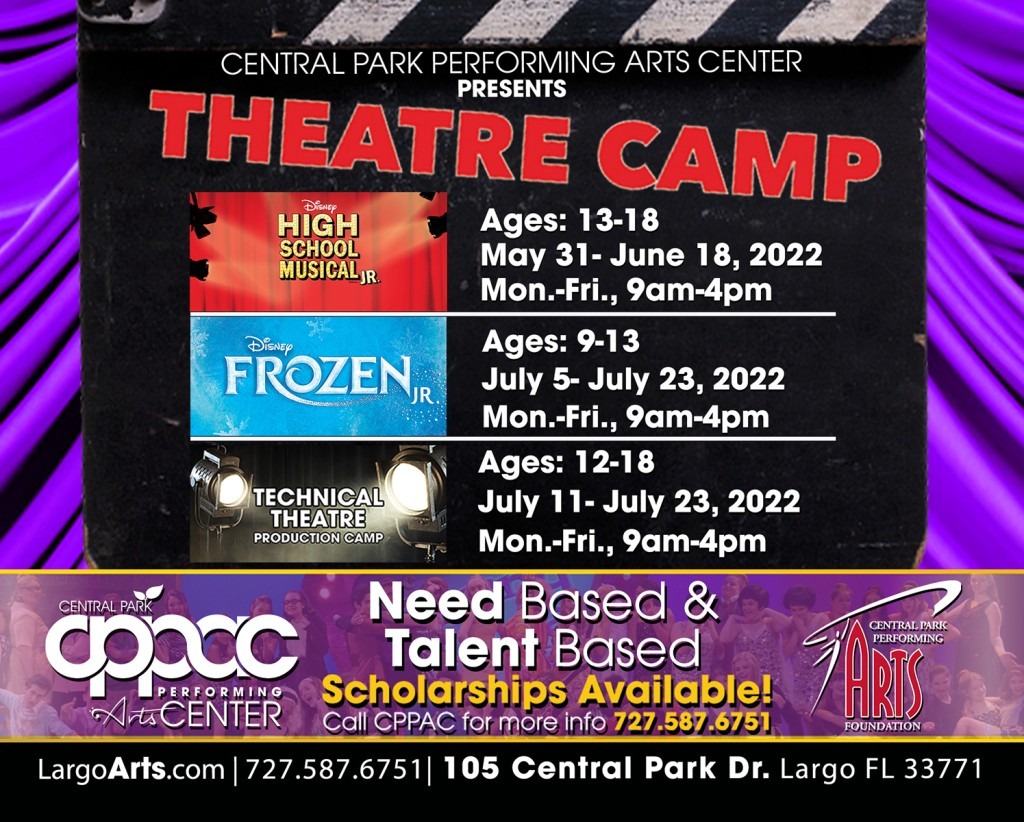
Disney High School Musical, Jr. May 31-June 18 – Monday-Friday, 9 am-4 pm, Ages 13-18. Mandatory Orientation: May 23 at 7 pm, Public Performances: June 17 at 7 pm & June 18 at 11 am. Cost: $395 resident / $445 non-resident
Actor, director and arts educator Mona Lim leads this three-week teen intensive musical based on the popular movie series. Disney’s High School Musical Jr. is for the student who has some performance experience and wants to dive deeper into musical theatre. Students work on vocals, movement and acting in preparation for a fully-staged production with lights, set, costumes and their amazing skills!
Disney Frozen, Jr. July 5-23 – Monday-Friday, 9 am-4 pm, Ages 9-13. Mandatory Orientation: June 27 at 7 pm, Public Performances: July 22 at 7 pm & July 23 at 11 am. Cost: $395 resident / $445 non-resident
Your young performer will have fun with this introduction to musical theatre led by Mona Lim. They will build lifelong skills, make new friends and perform on a professional stage in the magical, positive production of Disney’s Frozen Jr.
Technical Theatre Production Camp July 11-23 – Monday-Friday, 9 am – 4 pm, Ages 12-18. Public Performances: July 22 at 7 pm & July 23 at 11 am. Cost: $250 resident / $300 non-resident
Led by entertainment industry professionals, participants in this camp will work with scenery, rigging, audio, sound and lighting equipment — culminating in the live performances supporting the Disney’s Frozen, Jr. summer camp production. . . .
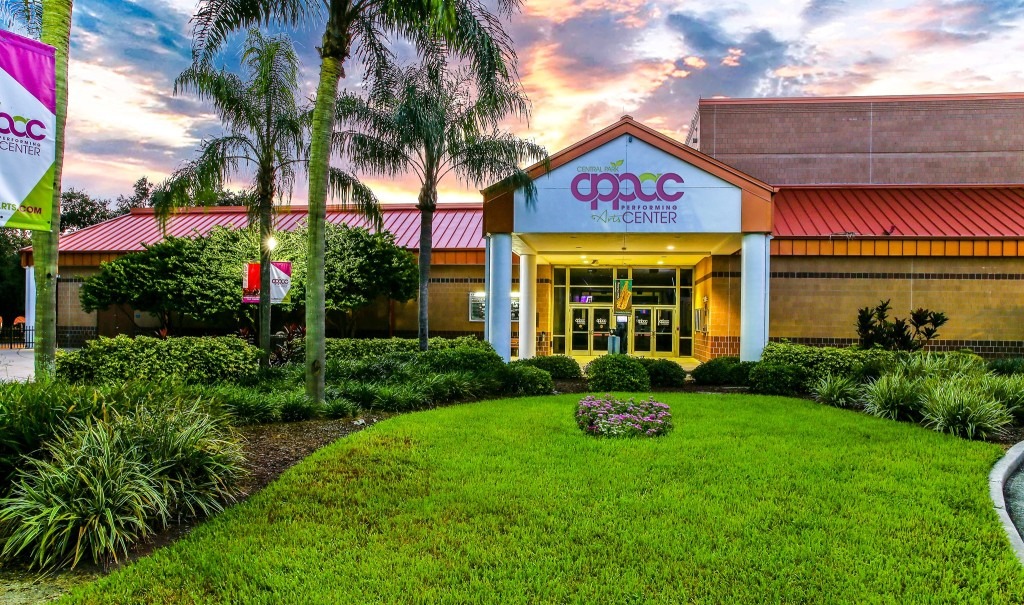
Central Park Performing Arts Center is located at 105 Central Park Dr., Largo FL 33771, 727-587-6751. To sign up for Theatre camps, visit largoarts.com . . . .
Note: The City of Largo Has Critical Need for Summer Camp Counselors age 18 and up. “Childcare is essential for working parents, especially during the summer months,” says Krista Pincince, Largo Recreation, Parks, & Arts Department Director. “Currently, the City of Largo only has only received half the number of applications as the number of positions that need to be filled. If we are unable to hire as many summer camp counselors as possible, the number of children that we serve will have to be reduced.”
Largo Summer Camp Leaders can enjoy a fun job with great hours that keep nights and weekends free, and an opportunity to meet new friends while building their resumes. In addition, new hires who complete the entire 10 weeks of summer camp with Largo Recreation are eligible to receive up to $300 in incentives.
“Many staff that worked for our summer camps have said that it is the best job they have ever had,” said Director Pincince. “As a young adult, you can have fun while impacting the lives of the children registered in the program.”
You can visit Largo.com/Jobs to find out more and apply.
Safety Harbor Art and Music Center
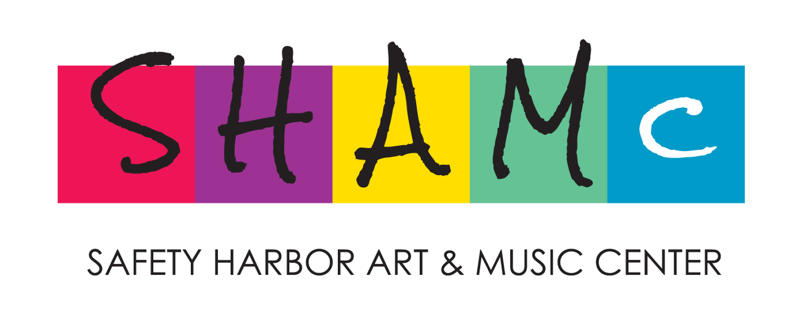
. . . June 6-10 – Creative Writing Camp with Laura Kepner Do you have a wild imagination? Are you a kid who makes up adventures without ever leaving your house? Learn how to create amazing worlds, believable characters, surprising plots and solve the world’s most intriguing mysteries. We’ll work on short stories, poetry, zines and more. This camp will make writing fun and all kids are welcome, even if writing isn’t your best subject. Supplies will be provided.
On Friday will we do a short performance of works created during the week, please bring friends and family for this event. (Note: We have a job for everyone, even those who don’t like to perform.) Details here .
June 13-17 – Cardboard-Mixed Media Camp with Beth Warmath Award-winning visual artist Beth Warmath will lead the class in hand building super funky art using cardboard and mixed media. We will work individually and collaboratively on projects using different textures of cardboard. Students will use their imagination to build anything they can dream up. We will work on daily projects and a gallery project. All materials will be provided. Details here . . . .

. . . June 20-24 – Recycled Art Camp with Autumn Pearson Spend a week turning “trash” into “treasures!” In this weeklong session students will learn about the importance of recycling and being good stewards of the land, while creating magnificent works of art! Utilizing everyday items that are discarded or thrown away, such as aluminum cans, bottle tops, old cloths, newspapers and more, participants will engage in making quality individual art pieces and group projects that showcase how trash can be transformed into art. Sign up for this unique experience and you will never look at trash the same again! Details here .
June 27-July 1 – Fine Art Camp with Autumn Pearson What to be an explorer? An “Art Explorer?” Join this weeklong camp and explore the many aspects of “Fine Arts.” Student will have in-depth experiences in learning about and practicing in the fine arts of drawing, painting, textiles and sculpture. Student will have the opportunity to learn the elements and principles of design, study famous artists and experience these techniques for themselves. This is a great session to try your hand at many art forms and create masterpieces for yourself! Details here . . . .
Safety Harbor Art and Music Center is located at 706 2nd Street North, Safety Harbor FL 34695, 727-304-LOVE.
If you would like to be a sponsor of SHAMcamp, please contact SHAMc at 727-725-4018 to discuss sponsorship opportunities.
Warehouse Arts District
Aresty School for Young Artists warehouseartsdistrictstpete.org/summercamp . . .

. . . For ages 7-11. Monday through Friday, 9 am-12 pm and 1-4 pm. Extended hours available. Full-Day: $299, WADA Members: $274, Art Teachers & Students: $232, Supply fees included. Half-Day: $179, WADA Members: $164, Art Teachers & Students: $149, Supply fees included. Scholarships are available through Creative Pinellas . . . .
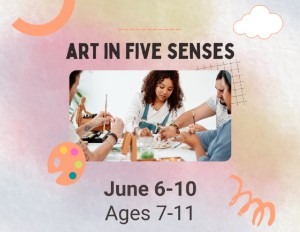
. . . The Aresty School for Young Artists is located at 515 22nd St S, St. Petersburg FL 33712, 727-256-0821. Registration details are at warehouseartsdistrictstpete.org/summercamp .
Dalí Museum
2022 Junior Docent Summer Art Camp thedali.org/programs/camp . . .
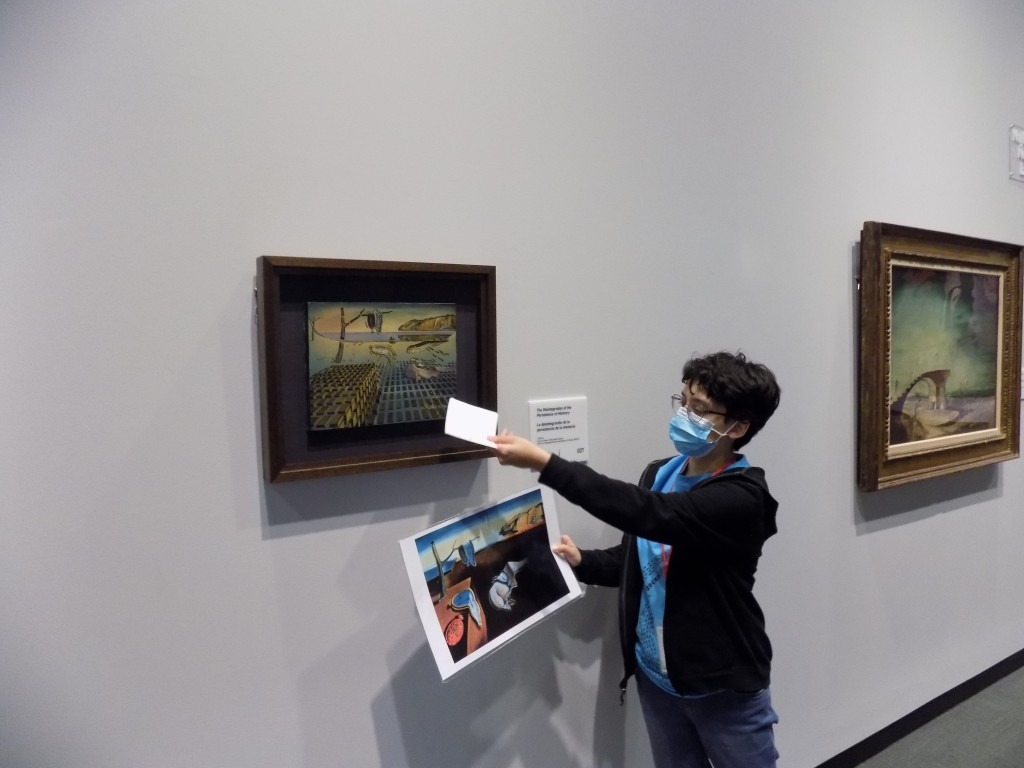
The theme for this summer’s Junior Docent program is Inventing Identity and this camp is ideal for children 9 to 14 years of age.
Campers will have a lot of fun meeting new friends, creating art and learning how Salvador Dalí displayed his identity through his art. Campers learn to interpret paintings, share compelling stories and deeply understand the power of images. As a bonus, they feel empowered to think independently about art and to express their own thoughts and opinions with greater confidence.
Junior Docent Camps are available both in-person and online. For In-person Junior Docent Art Camp, The Dalí Museum and participants will abide by all Museum health & safety guidelines to help create a safe, clean environment. Students will be spaced 6 feet apart and have their own assigned workspace and individual materials. . . .
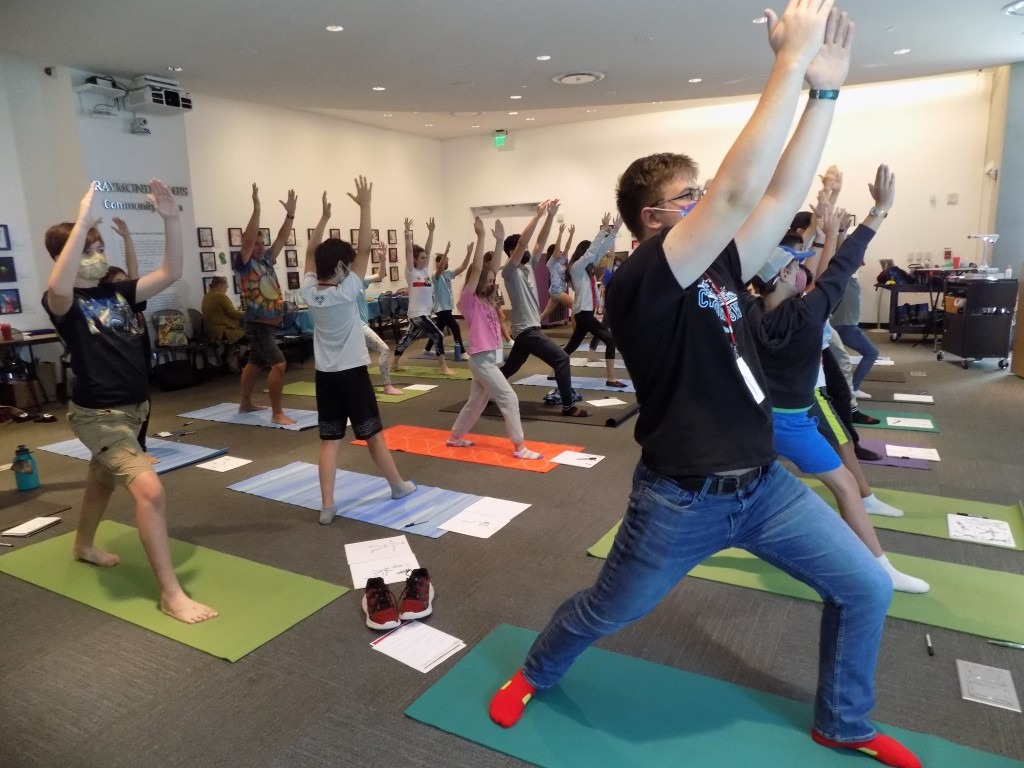
Virtual Learning, Dates and Fees Dates: July 11–15, 9:30 am to 3 pm. Price per Week: $85 non-member/$65 member Ages: Mix of middle and elementary students Instructors: 2 Student materials: List of recommended materials will be provided by the museum. Items should be purchased by individual families. Campers receive instruction via professional level of Zoom, which provides added security. Zoom can be accessed from a smart phone, tablet or computer.
June 13-17 (In-person) [ Register Here ] June 27 – July 1 (In-person) [ Register Here ] July 11-15 (Virtual) [ Register for Virtual Camp Here ] July 25-29 (In-person) [ Register Here ] . . . . . .

. . . A limited number of scholarships are available for both in-person and virtual camps. For information please contact Sumaya Ayad, School Programs Manager at [email protected] .
The Salvador Dalí Museum is located at 1 Dali Blvd, St. Petersburg FL 33701, 727-823-3767.
Eckerd College
Summer Theatre Camp for Teens with Asolo Rep eckerd.edu/precollege/theatre . . . . . .

. . . Eckerd College partners with Asolo Repertory Theatre in Sarasota to launch a new pre-college residential program in summer 2022, Theatre for Social Change , designed for rising 10th-12th grade students.
Blending the strengths of both institutions, Theatre for Social Change offers tools that allow students to experience social-emotional learning and creative problem solving. In this dynamic intensive, Young Artists will work with professional theatre artists to devise stories to affect social change – adapting familiar tales into epics of today.
This residential week of creating, collaborating and connecting will challenge participants to use what is important to them to grow works of art and plant seeds of change. . . .

. . . Check-in: June 12, between 2:30-3:45 pm. Check-out: June 17, between 2:30-4 pm.
Cost: $695 per student includes transportation for all sessions, activities, performances, field trips to Asolo Theatre in Sarasota, program supplies, entrance fees, use of college recreational facilities, meals, lodging and snacks.
Partial scholarship requests are available. A refundable, $100 scholarship deposit is required to reserve space. For scholarship information, contact Courtney Smith, Executive Director, Continuing Education – [email protected] or 727-864-8312. . . .
Eckerd College is located at 4200 54th Avenue South, St. Petersburg FL 33711, 727-867-1166.
Scholarship information can be found here . Scholarships and Financial Assistance are available thanks to a generous contribution from the Charles & Margery Barancik Foundation . Students must register to reserve space in the program and submit a scholarship application for review.
Find registration information here .
Museum of Fine Arts St. Petersburg
mfastpete.org/programs/youth-programs . . . . . .
July 11–15, Art & Archaeology — Designed for rising 1st to 5th graders. Imagine time traveling Ancient Greece to Mesoamerica, and even right here in Tampa Bay! Explore artifacts, a mini archaeology site, and create a time capsule for a future dig. Please register by July 9.
July 18–22, Art & Nature — designed for rising 1st to 5th graders. Join a safari through the art museum galleries to discover how animals, plants, weather, water and sky inspire artists. Campers will create nature-inspired artworks and learn how artists share the beauty of nature and help protect it. Please register by July 16. . . .
The Museum of Fine Arts, St. Petersburg is located at 255 Beach Dr NE, St. Petersburg FL 33701, 727-896-2667.
Morean Arts Center
School’s Out, Art’s In Camp moreanartscenter.org/camps . . .
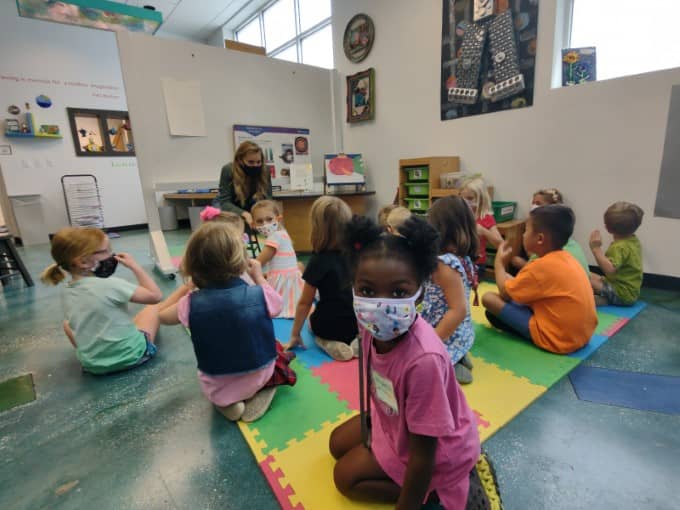
9 Weeks of Camp Fun with visual art, glass, clay, photography and more, starting June 6. Monday-Friday 9 am-3 pm. Aftercare available until 5:30 pm for additional fee. $200 member, $250 non-member. Scholarships available through Creative Pinellas. . . .
Morean Arts Center, downtown St. Petersburg Starting June 20 – Trash to Treasure Ages 7-10 Starting June 27 – Who Did That?! Ages 7-10 Starting June 27 – Who Did That?! Ages 5-6 Starting July 5 – Oh Oh Its Magic Ages 5-6 Starting July 5 – Oh Oh Its Magic Ages 7-10 Starting July 11 – Inspired By Nature Ages 7-10 Starting July 18 – Animal Kingdom Ages 7-10 Starting July 25 – Explore the Chihuly Collection Ages 7-10 Starting July 25 – Explore the Chihuly Collection Ages 5-6 Starting August 1 – Making Waves Ages 5-6 Starting August 1 – Making Waves Ages 7-10
Registration details here . . .

. . . Morean Center for Clay, Warehouse Arts District, St. Pete Weeklong Clay Camps for Teens, start dates June 6-August 1.
Registration details here
. . . The Morean Arts Center is located at 719 Central Avenue, St. Petersburg FL 33701. The Morean Center for Clay is located at 420 22nd Street South. The phone for both is 727-822-7872.
The James Museum of Western and Wildlife Art
thejamesmuseum.org/summercamp . . . . . .

. . . Come enjoy an art adventure this summer at The James Museum of Western and Wildlife Art! Week-long summer day camps encourage children to get messy as they explore a variety of art making processes.
With inspiration from our collection of paintings and sculptures, campers will bring their own ideas to life in our children’s art studio. Art camp offers opportunities for hands-on learning, creative thinking and collaboration. Camp Hours 9 am–3:30 pm. Extended care before and after camp is not available. Camps designed for rising 1-6 graders, Co-ed. Cost: $250; $225 for members. . . . June 13-17 – Art Explorers Entering grades 1-3, Sold Out! Contact [email protected] to be put on our waiting list.
June 27-July 1 – S.T.E.A.M. Spectacular Entering grades 4-6 Think big and bold! Combine science, technology, engineering, art and math to create dynamic 2D and 3D works. Design your own art bot, build with unique materials, sculpt with clay and try large-scale action painting.
July 11-15 – Media Mix-Up Entering grades 1-3. Sold Out! Contact [email protected] to be put on our waiting list
July 25-29 – Funky Forms Entering grades 4-6 Create funky, colorful artworks inspired by the museum’s collection of sculptures and paintings. Experiment with interesting techniques like mold-making, wire sculpture, foil embossing and fiber weaving. . . .

. . . Testimonials from Camp Parents “This was our favorite camp all summer. It was fun, my son was inspired and learned new things. I appreciated the affordability, outdoor time, great hours, field trip and safety protocols.”
“A class act, all the way! Thank you for ensuring a wonderful art camp for my daughter.”
“My daughter had a great week. She came home and continued to create art. The art show was really nice. She was so happy to show her work. The pickup and drop off was seamless. We will return next year!!” . . .
The James Museum of Western and Wildlife Art is located at 150 Central Ave, St. Petersburg FL 33701, 727-892-4200.
American Stage
Arts Summer Camp: Powerful Stories. Boldly Told. americanstage.org/education . . .
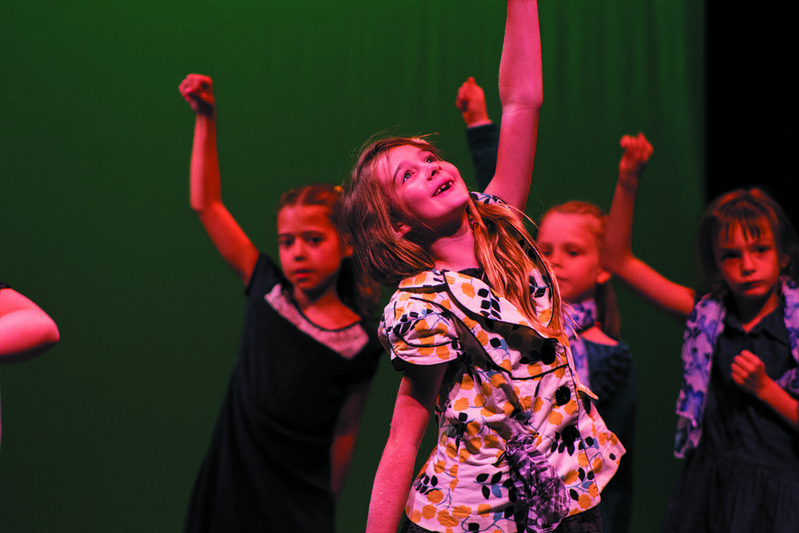
Students in rising grades K-12 participate in week-long sessions that delve into comedy, musical theater, playwriting, choreography, staging, ensemble exercises and music. All students are encouraged to be fearless, focused and flexible — onstage and in daily life.
One camp session experience, the Rhythm is Gonna Get You! Camp offered June 13-17 will explore the music-making process using a variety of percussion instruments – a perfect camp for students who enjoy music, movement and self-expression.
All experience levels are welcome. The teaching artist staff includes working theatre professionals who have a passion for teaching. They are trained in key methodologies, cultural competency and inclusion. . . .

Summer Camp Sessions Grades 3-5 LAUGH FACTORY (June 6-10) AROUND THE WORLD WITH LIN (June 13-17) PUPPET POWER! (June 20-24) DISNEY SIDEKICKS: “…AND PEGGY!” (June 27-July 1) MYSTERIES UNRAVELED: ENOLA & SHERLOCK (July 11-15) ZAP, BANG POW! HEROIC MOVEMENT & STAGE COMBAT (July 18-July 22) WHERE THE SIDEWALK ENDS: EXPLORING SHEL SILVERSTEIN (July 25-29) JOURNEY THROUGH SPACE (August 1-5) . . .
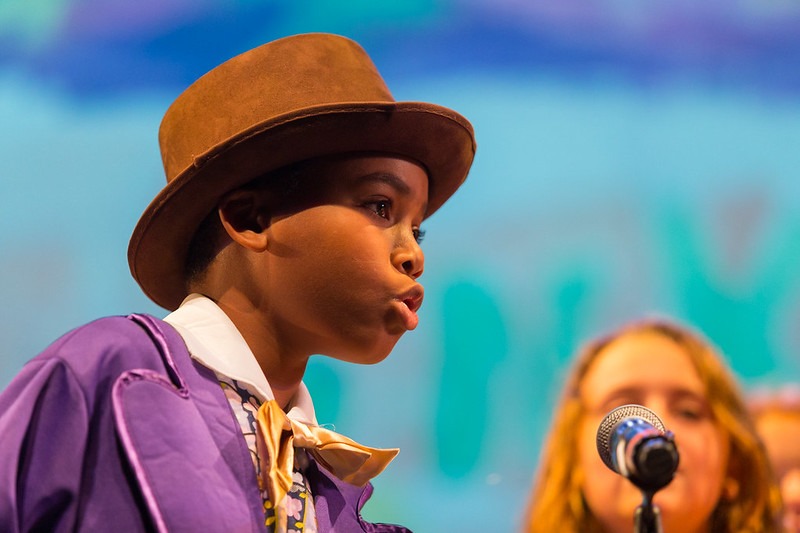
. . . Summer Camp Sessions Grades 6-12 LAUGHTER IN THREE’S: COMEDY FORMATS (June 6 – 10) MUSICAL MOMENTS OF MIRANDA (June 13 – June 17) MUSICAL THEATRE PUPPETRY (June 20 – June 24) DISNEY DEEP-CUTS AND HIDDEN GEMS (June 27 – July 1) WHO DUNNIT: CREATE YOUR OWN MURDER MYSTERY (July 11 – July 15) MUSICAL MOVEMENT: STAGE COMBAT & CHOREO (July 18 – July 22) THE BARD AND THE BEAT (July 25 – July 29) A TALE OF TWO GALAXIES (August 1- August 5)
. . . Classes are held at Admiral Farragut Academy, 501 Park Street North in St. Petersburg, Monday through Friday from 9 am to 3 pm, $225 per session. Pre-care and after-care available for additional fees. Financial aid applications are available online, and American Stage offers a 10-percent discount for Military families and teachers. For more information on sessions, pricing, financial aid and safety protocols, please visit: americanstage.org/summer-camp-at-afa/ , 727-823-7529, [email protected] . . .

“I’ve learned so many life lessons that I could not have gotten anywhere else… I’ve learned how to go about life as a strong-minded individual.” – Camp Student
St Petersburg City Theatre
spcitytheatre.org/summer-camp
All Arts Summer Camps at St. Petersburg City Theatre are SOLD OUT. Please email [email protected] to be placed on the waiting list.
St. Petersburg Arts Alliance Scholarships
Funding futures awards program.
stpeteartsalliance.org/education/funding-futures
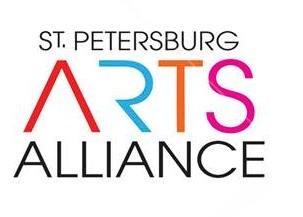
Applications are open to talented underserved students age 10-17 in Pinellas County who aspire to be musicians, actors, dancers, writers, visual or digital artists.
SPAA’s Funding Futures Awards Program is dedicated to helping students nurture their creative interests and develop their expressive talent by providing funding to eligible young artists and connecting them to St. Petersburg’s after school arts programs and summer arts camps.
Funding Futures is designed to identify and encourage talented at-risk emerging artists in Pinellas County seeking St. Pete programs in the categories of dance, music, jazz, voice, theater, digital arts, photography, cinematic arts, or visual arts. The program is open to all talented artists regardless of race, ethnic, social background, sexual orientation, gender identity or ability/disability.
Funds may be used for • Tuition for summer arts programs, both live and virtual • Musical instruments rental, purchase or repair • Equipment or supplies for a special artistic project • Individual instruction or master class tuition . . .
Organizations may nominate students and parents may email for an application. For information, visit our website at stpeteartsalliance.org/education/funding-futures .
If you are interested in supporting Funding Futures, your gift will help a young artist advance their interest in art and further develop their creative thinking, problem solving, communication and cooperation skills becoming a more well-rounded adult. stpeteartsalliance.org/donate
Become a Creative Pinellas Supporter

Submit Invoices
CURRENT The Arts Coast Cultural Plan
Pinellas County Arts Economic Prosperity 6 Full Report
Greater Tampa St Petersburg Arts Economic Prosperity 6 Region Report
Sign Up for Our Emails
Donate to Creative Pinellas
Creative Pinellas Strategic Pillars
Board Member Login
Creative Pinellas 12211 Walsingham Rd, Largo, FL 33778
The Gallery at Creative Pinellas Wednesday – Sunday 10am – 5pm 12211 Walsingham Rd, Largo, FL 33778
Call Us: (727) 582-2172
Creative Pinellas
As the County’s Local Arts Agency, Creative Pinellas and the programs we deliver are funded by the Pinellas County Board of County Commissioners, Visit St Petersburg / Clearwater, the State of Florida, Department of State, Division of Cultural Affairs, the National Endowment for the Arts and by sales of the State of the Arts specialty license plate in Pinellas County.

IMAGES
VIDEO
COMMENTS
One of the best ways to open your speech with a buzz is to startle or shock them. You can shock an audience in many ways, but they all rest on the major senses of VAKS: Visual. Auditory. Kinesthetic (touch) and Smell. We don't want your audience tasting your talk, but it should leave a good taste in their mouths.
Analyze their response and tweak the joke accordingly if necessary. Starting your speech with humour means your setting the tone of your speech. It would make sense to have a few more jokes sprinkled around the rest of the speech as well as the audience might be expecting the same from you. 4. Mohammed Qahtani.
Step 1: Think of all the questions that can help you to set the theme of your speech. Step 2: Make a point to not include close-ended questions and questions that are simply TOO GENERIC. Step 3: The last element that your question must include is the element of curiosity.
Opening Lines of the Top 10 Greatest Speeches of All Time. #1: Socrates - "Apology". "How you, men of Athens, have been affected by my accusers. I do not know.". #2: Patrick Henry - "Give Me Liberty or Give Me Death". "Mr. President, it is natural to man to indulge in the illusions of hope.".
15 Powerful Speech Open Lines (And How to Create Your Own) Hrideep Barot. Public Speaking, Speech Writing. Powerful speech opening lines set of tone and mood of to speech. It's what grips the audience to want till understand more about the take of our talk. The firstly few seconds are critical. It's when you have maximum attention of the ...
1) Thank the Organizers and Audience. You can start by thanking the audience for coming and thanking the organization for inviting you to speak. Refer to the person who introduced you or to one or more of the senior people in the organization in the audience. This compliments them, makes them feel proud and happy about your presence, and ...
Q&A. Why is using engaging speech openers important? — Using engaging speech openers is important because it captures the audience's attention and makes a strong connection with them from the start, setting the tone for the rest of the speech. What are some examples of creative speech openers? — Some examples of creative speech openers include telling a compelling story, asking a thought ...
Suggest that the audience complete a mathematical equation and promise to give the answer context during the speech. 21. The Activity Open - Of all the 25 ways to open, this one triggers the most immediate engagement. Use it during training sessions and workshops when you are trying to teach a specific skill.
Here are 8 tried and tested techniques for opening your presentation with a bang. 1. Amplification technique. Take something minor and demonstrate it's a serious problem. Take something farfetched and make it seem real. Take something alien and make it close to home. The surprise factor will have them hanging on to your every word.
Need ideas on how to start your upcoming speech? Public speaking is listed as Americans' number one fear, before death at number 5, and loneliness at number ...
2) Prompts. Once you have your research in place, you can begin looking at the kind of opening you want to utilize. Now there are a lot of options that you have here that can be used. 1. Humor. There's the ever-famous and highly utilized option of humor. Make your audience laugh and they will have your attention.
After that point, you'll be able to change those opinions about as easily as you can change a hamster into a ham sandwich. So here's how to be strong in the first 60 seconds of your speech. (2) Your opening sets the entire tone of your presentation (including whether you'll be interesting or not). (3) This is when you introduce your message and ...
Learn the 5 Best Ways to Start a Speech or Presentation. Crafting a killer opening is a vital public speaking skill and separates beginners from more advance...
In this article, we will explore the best and worst speech openers to help you captivate your listeners during your next presentation, pitch, speech, or toast. The Worst Ways to Open a Speech. When it comes to opening a speech, there are a few cardinal sins that should be avoided. Let's take a look at some of the worst ways to start: 1.
This speech opening line both makes our jaws drop to the ground in shock at such a statistic and opens our hearts to the human side of the story. Powerful stuff. Ginger tip: punchy facts. Opening your speech with a hard-hitting fact can quickly add credibility to your talk and demonstrate the scale of an issue. It's best to keep statistics ...
4. The Value Proposition. Another good way to start your presentation is to jump straight to addressing the audience's selfish motives. They only care about their own needs and priorities, and the whole reason that they showed up to listen to you is because they want to derive value from your presentation.
They might in fact be attending a number of presentations that week. So you need to let them know right away that you're the speaker who is going to be interesting. Once engaged, listeners will stay with you. That is, as long as the body of your speech doesn't fail to live up to expectations. But it's that hook that gets everything started.
Here are 26 different techniques for beginning your speech: 1. Use a quote. One method of starting a speech and gaining the audience's attention is to use a famous or relatable quote. This approach can give your audience context for your topic and connect it to something they recognize. For instance, if you plan to give a speech on a political ...
But realize that these are only patterns. Once you get a general flow for a few of the speech openers that I'm bringing up, it will be easier to open your speech. Let's start with a few. 1. Shocking Statistic. Statistics satisfy the intellect. Shock satisfies the heart. A combination of the 2 sparks curiosity.
Speech: 'Be the light that brings hope and that accelerates progress towards an equal, sustainable, and peaceful future' Opening remarks delivered by UN Women Executive Director Sima Bahous at the UN official commemoration of International Women's Day, 8 March 2024, UN headquarters
Biden's State of the Union address is the opening speech of the presidential election. March 8, 20247:13 AM ET. Heard on Morning Edition. By. A Martínez. , Asma Khalid. Listen · 3:40. 3-Minute ...
Al Pacino presents the award for best picture during the Oscars on Sunday, March 10. There was no envelop mix up at the Oscars on Sunday, but there was some confusion in the audience when Al ...
Good morning, welcome to Hong Kong and the 18th World Cargo Symposium. I want to extend my thanks to Cathay Cargo and Hong Kong International Airport for hosting this event. We are all connected to an industry that matters. Air cargo is critical for the global economy. And it improves people's lives.
An SNP quango has withdrawn support for a project it backed with £110,000 of public money that turned out to be a "hardcore porn" film.. Creative Scotland said it would attempt to claw back ...
The host kicked off Sunday's show in style, marking his fourth time as emcee for the star-studded gala. Jimmy Kimmel took the stage on Sunday at the 96th annual Oscars, and kicked off the big show ...
Jimmy Kimmel's opening monologue at the 96th Academy Awards took its usual digs at many ... The culmination of Kimmel's speech was a several minute ode to the 148-day writers' strike that ...
The best season to visit St.Petersburg. In general summer (June, July, August) is the best. Though with our Northern summer you can never be 100% sure about the weather at least long days (so-called White Nights) will help you to extend your limited time in the city quite a lot.
Published March 7, 2024 Updated March 8, 2024, 12:12 a.m. ET. President Biden jousted during his speech with Representative Marjorie Taylor Greene, a far-right representative with a history of ...
By Carlene Cobb. As the curtain falls on another school year, Pinellas County students and families focus on summer plans, including exciting new Arts Summer Camps. Young artists look forward to making new friends while delving into the world of visual and performing arts where they hone their skills in drawing, painting, pottery, dancing, playing music, acting, mural design, storytelling ...
You can hire a Creative Writer near St. Petersburg, FL on Upwork in four simple steps: Create a job post tailored to your Creative Writer project scope. We'll walk you through the process step by step. Browse top Creative Writer talent on Upwork and invite them to your project. Once the proposals start flowing in, create a shortlist of top ...